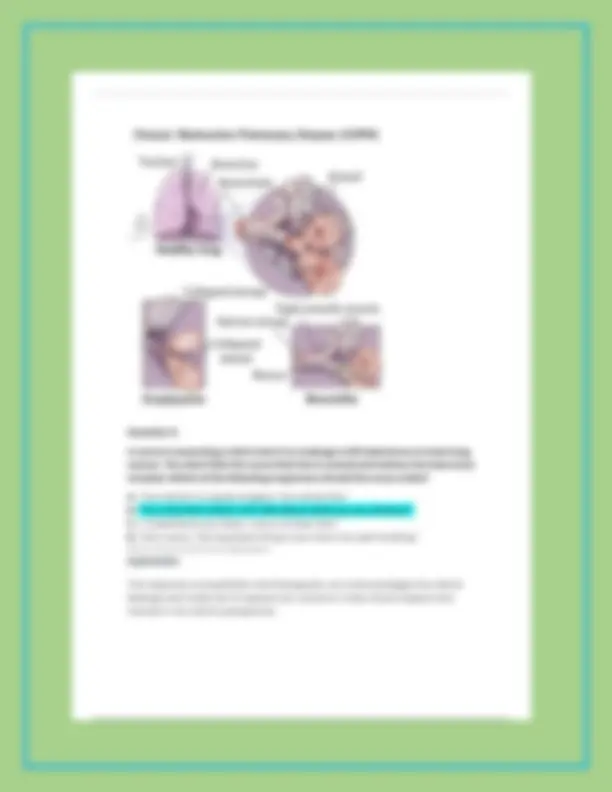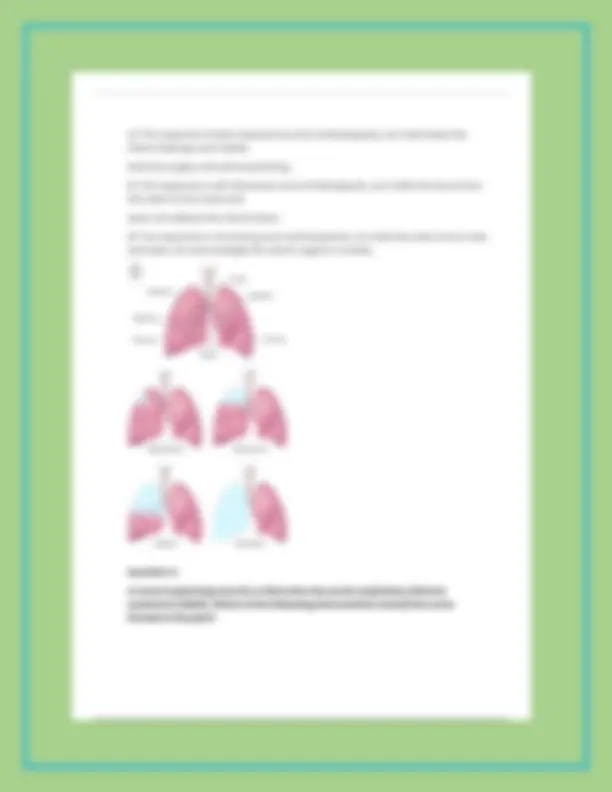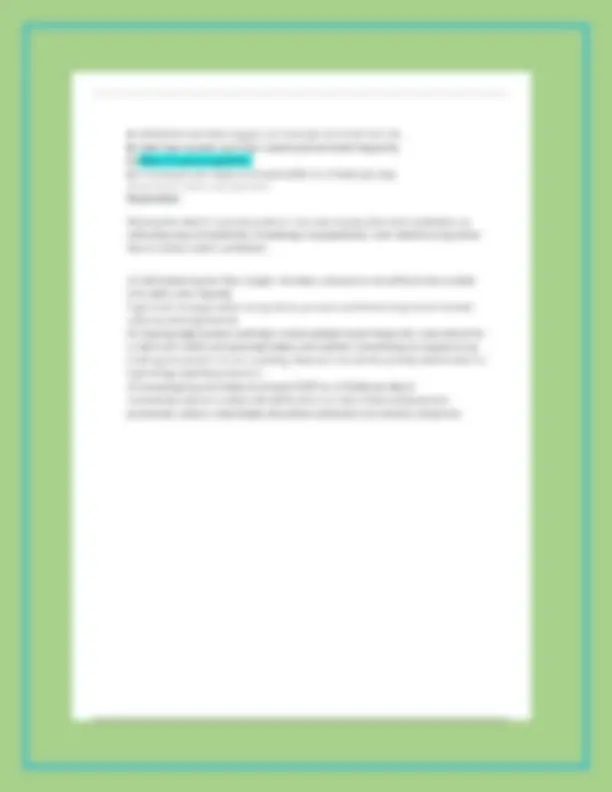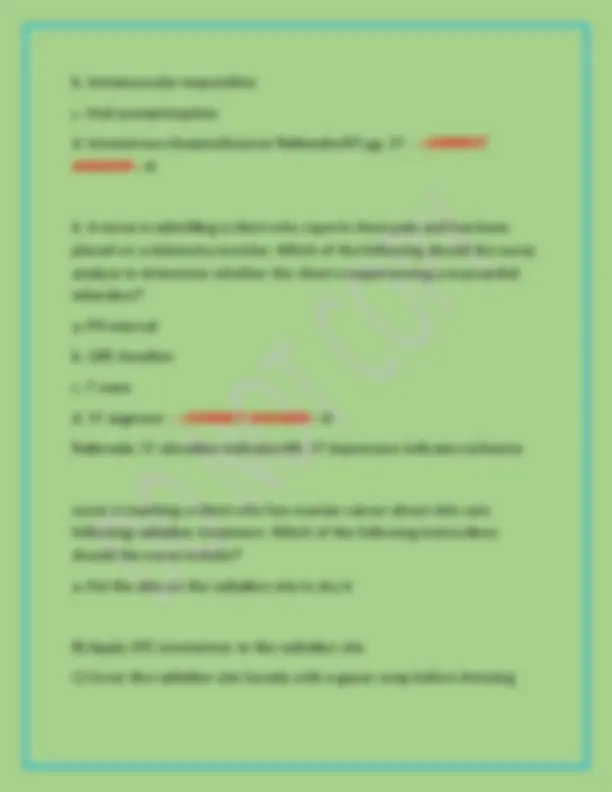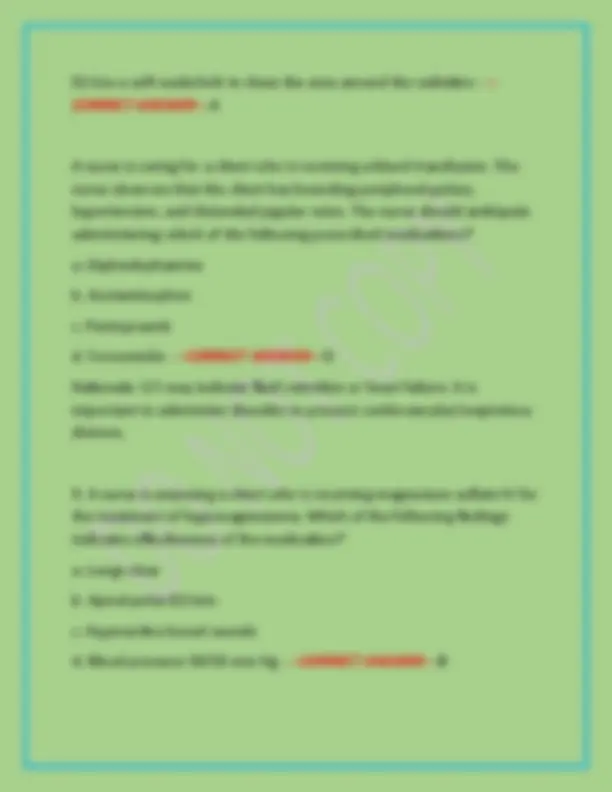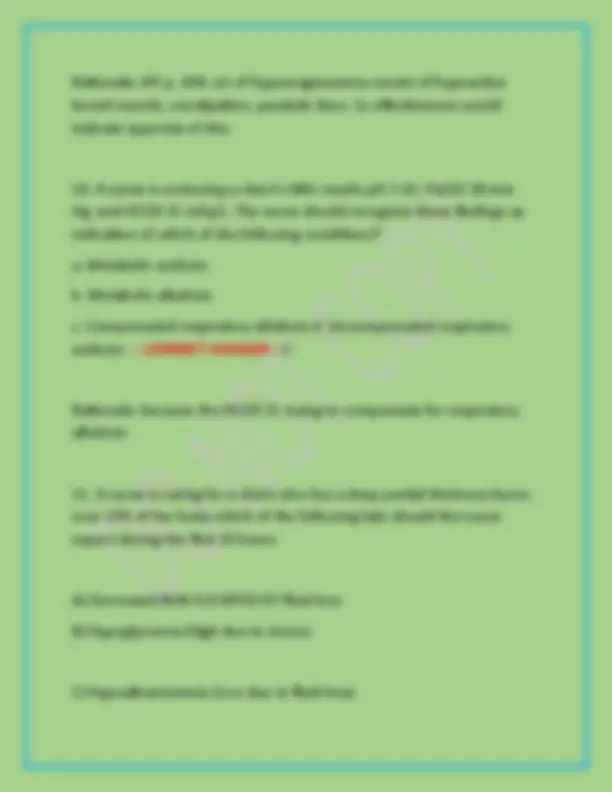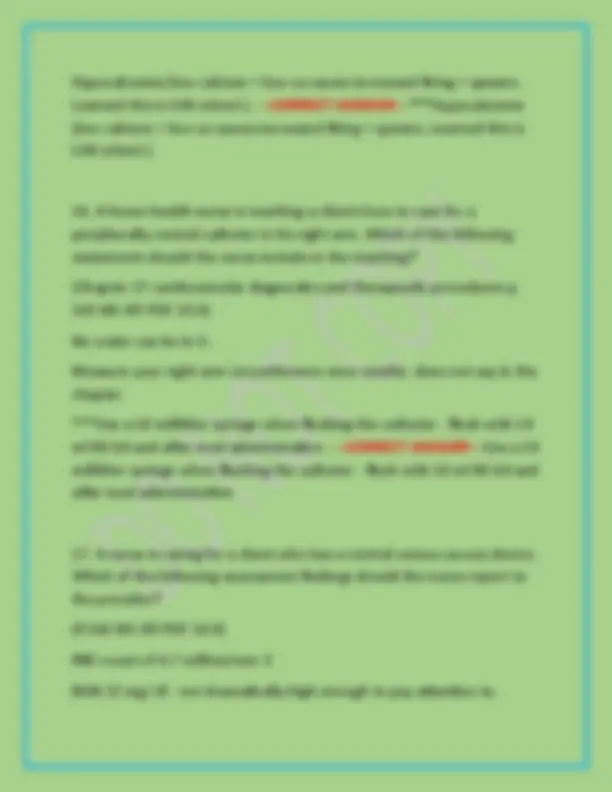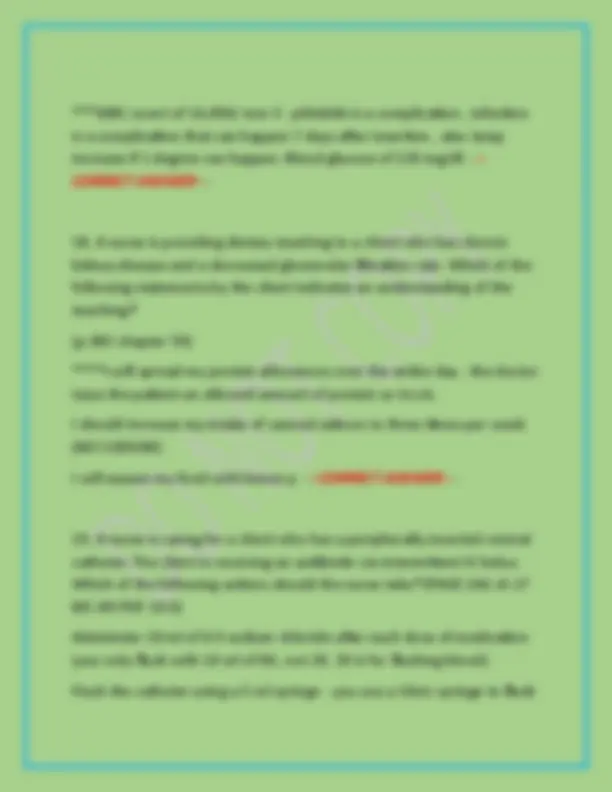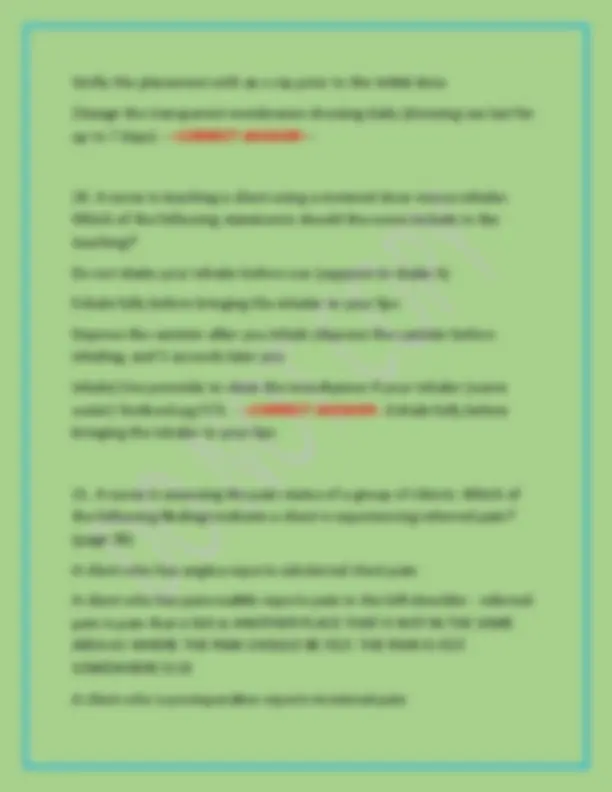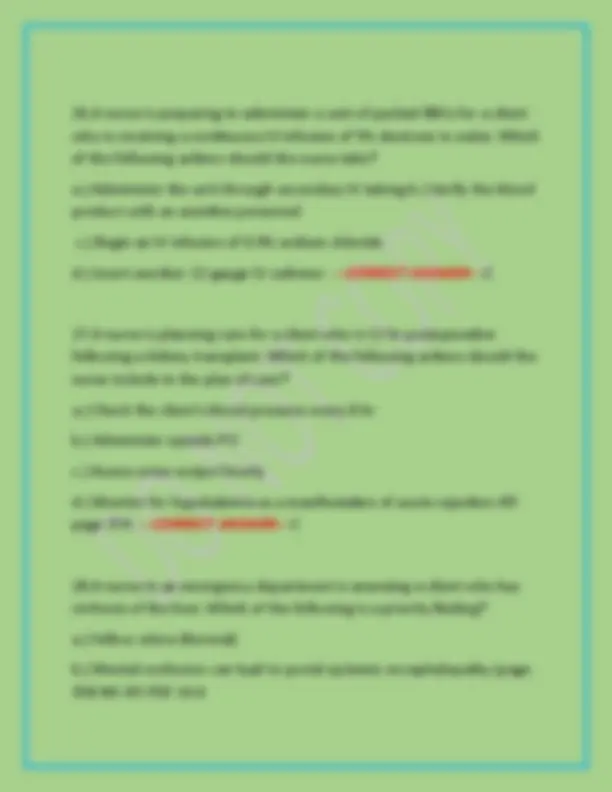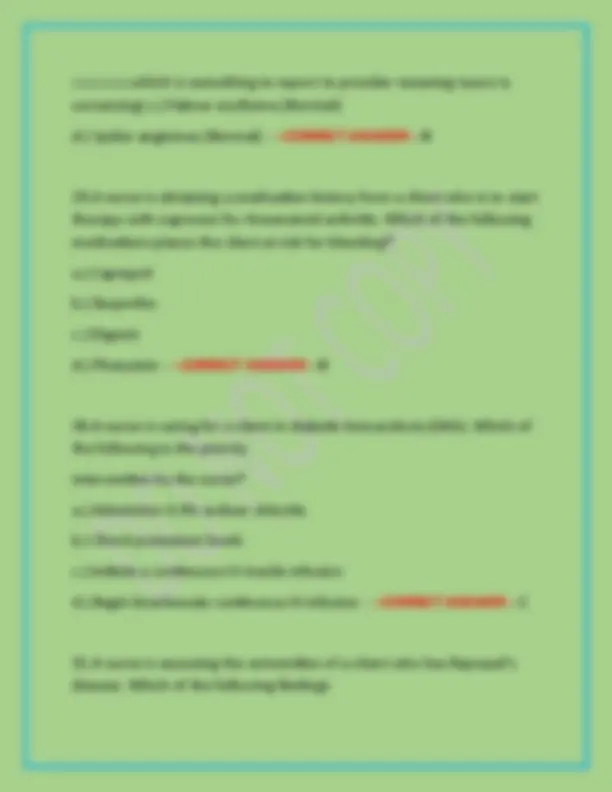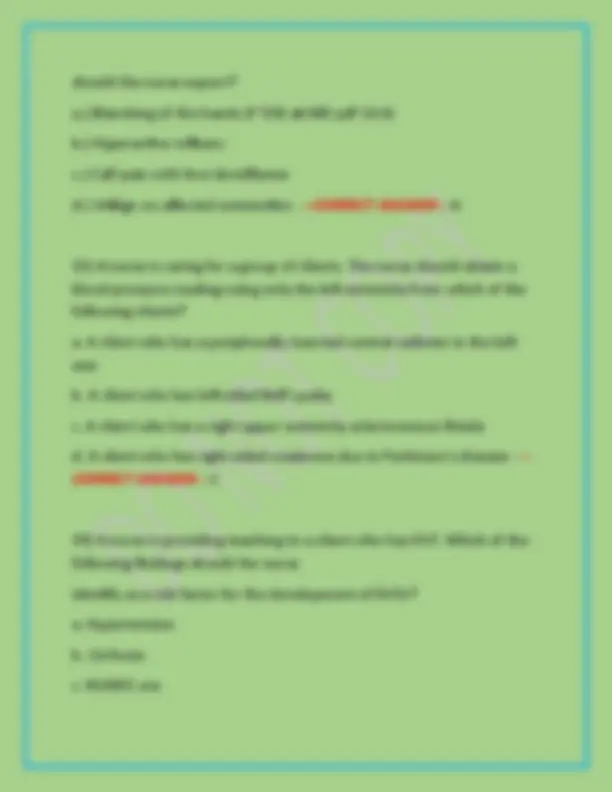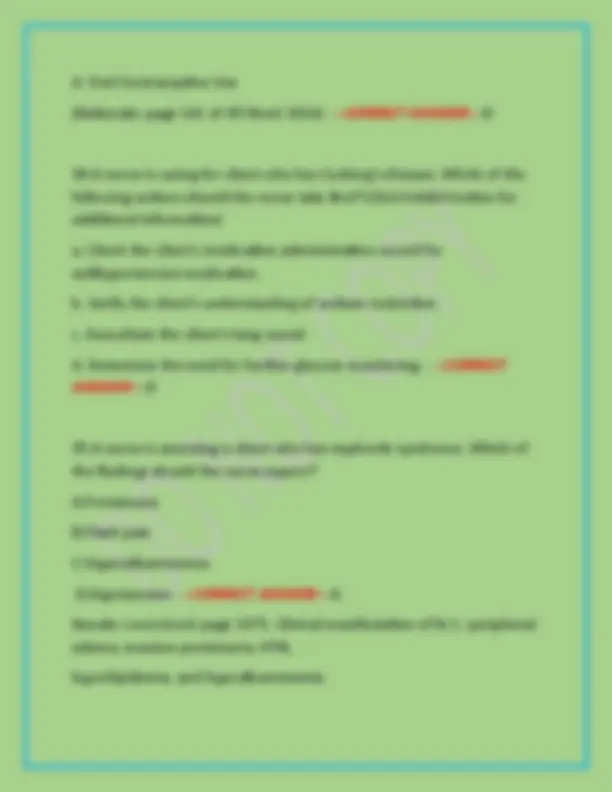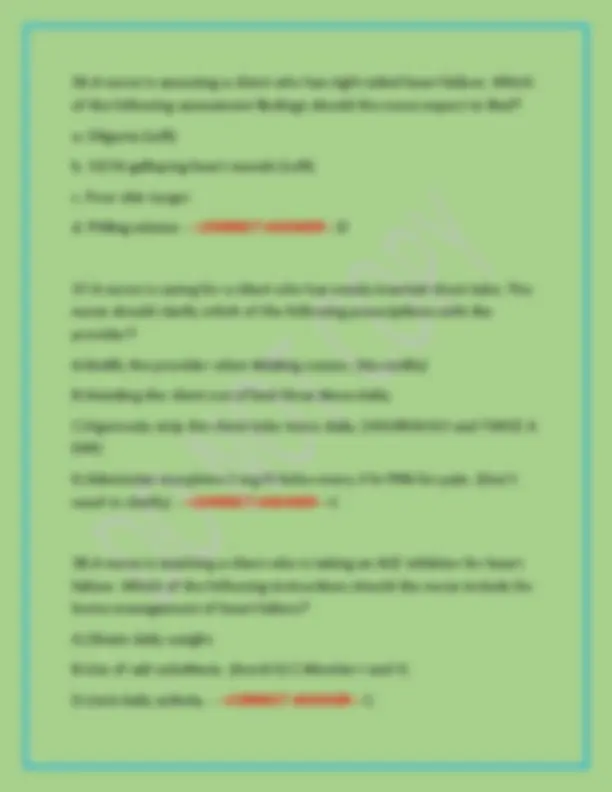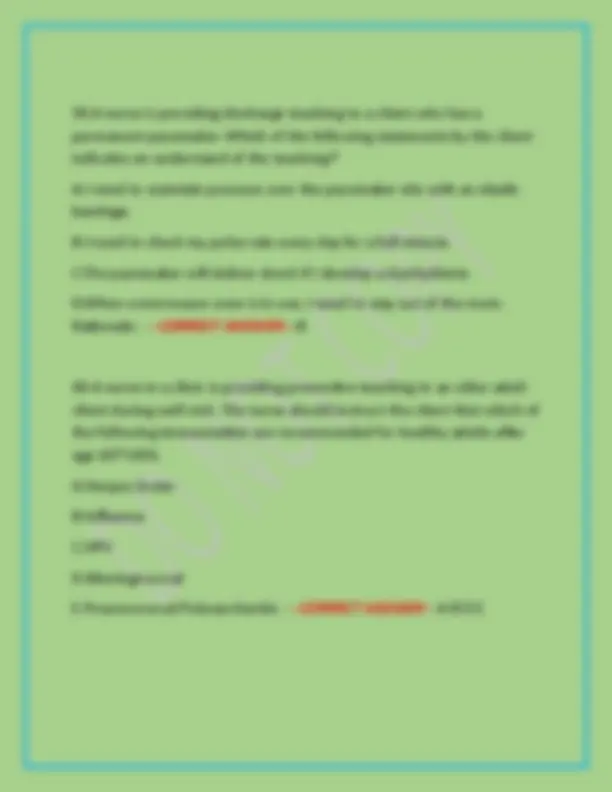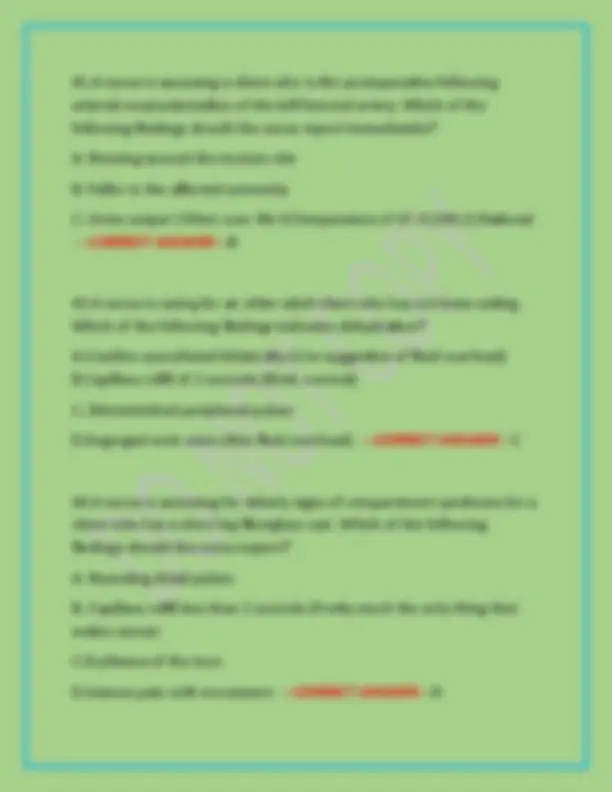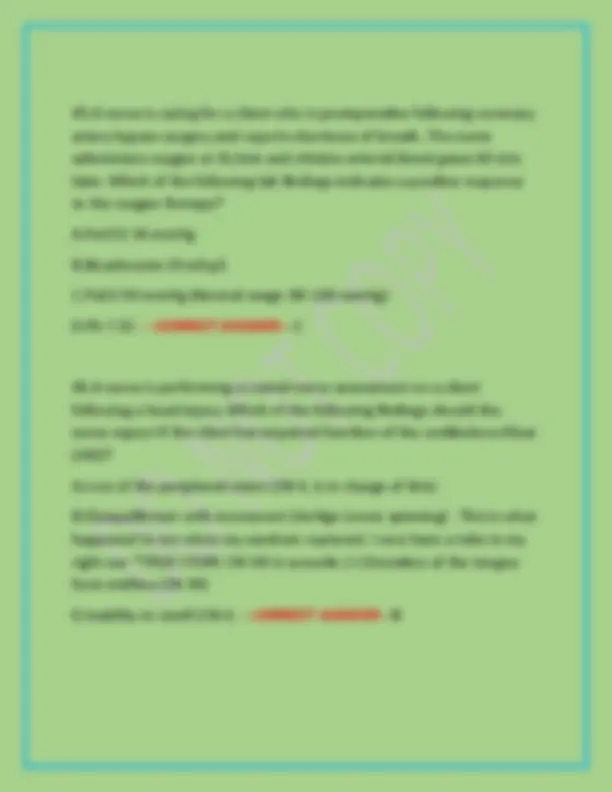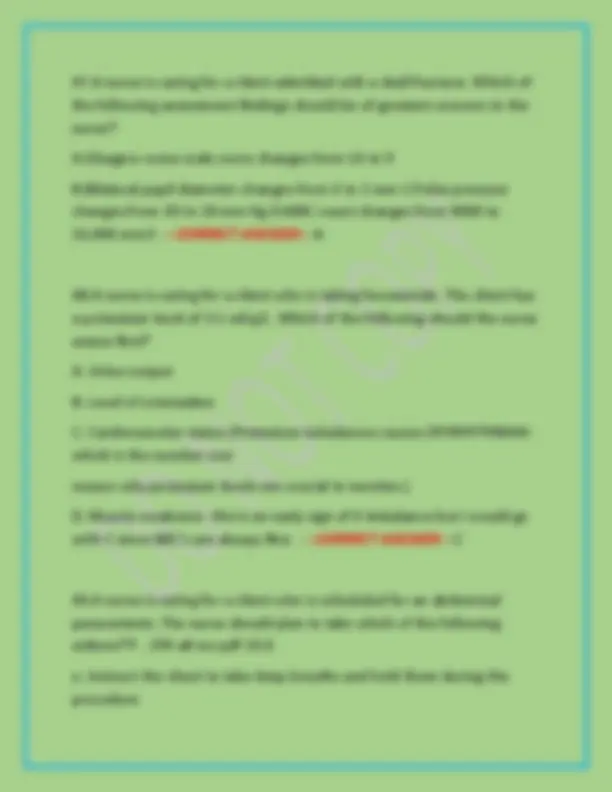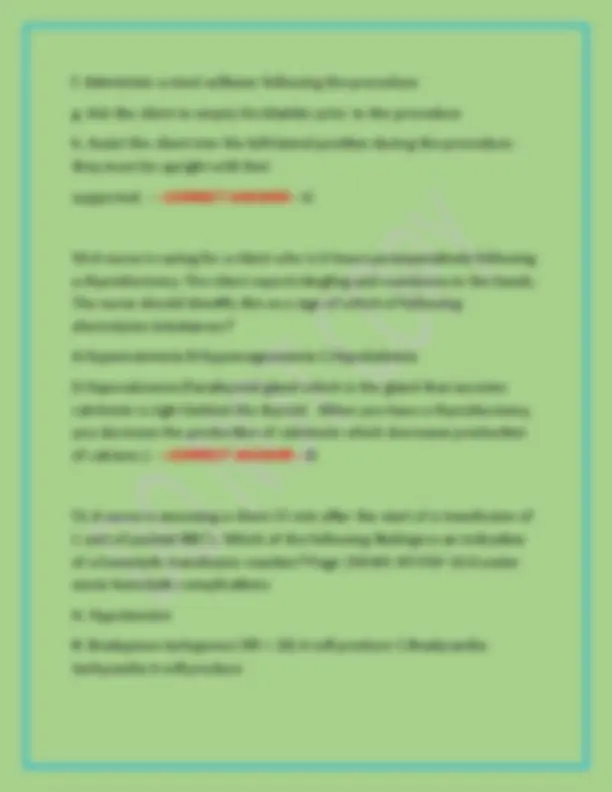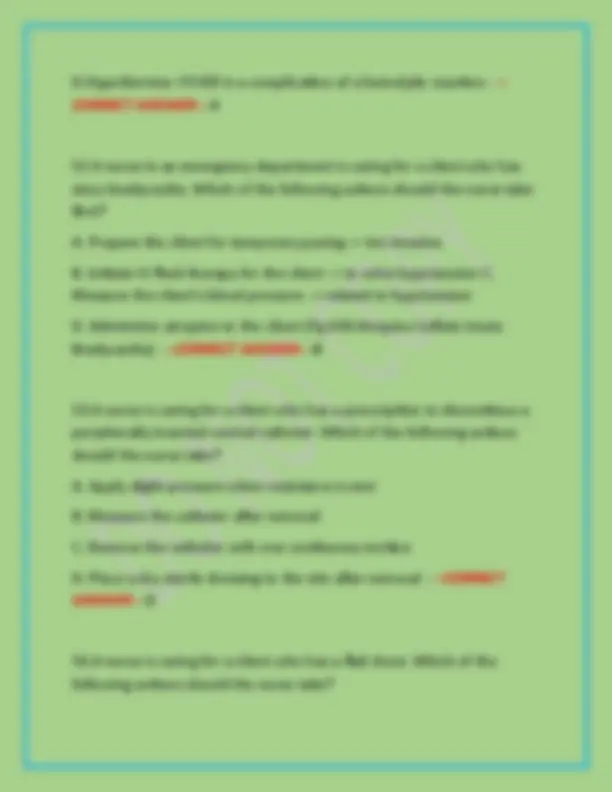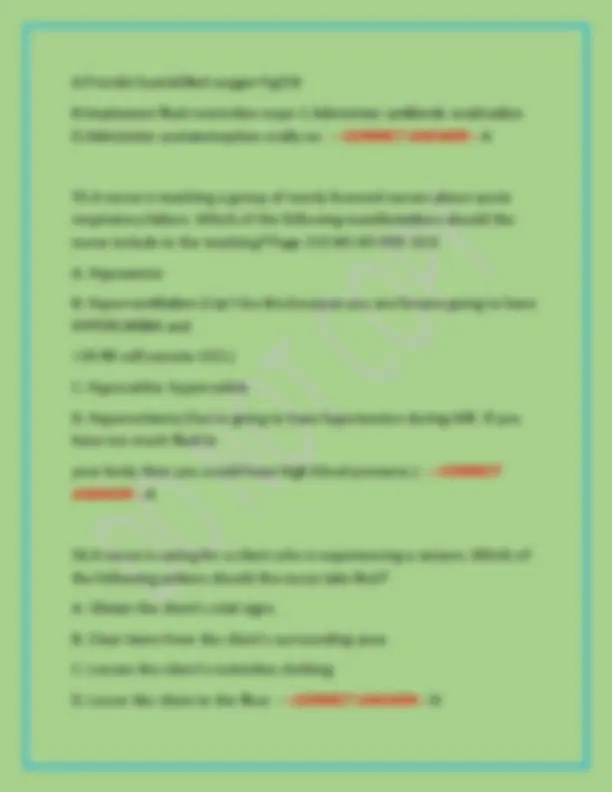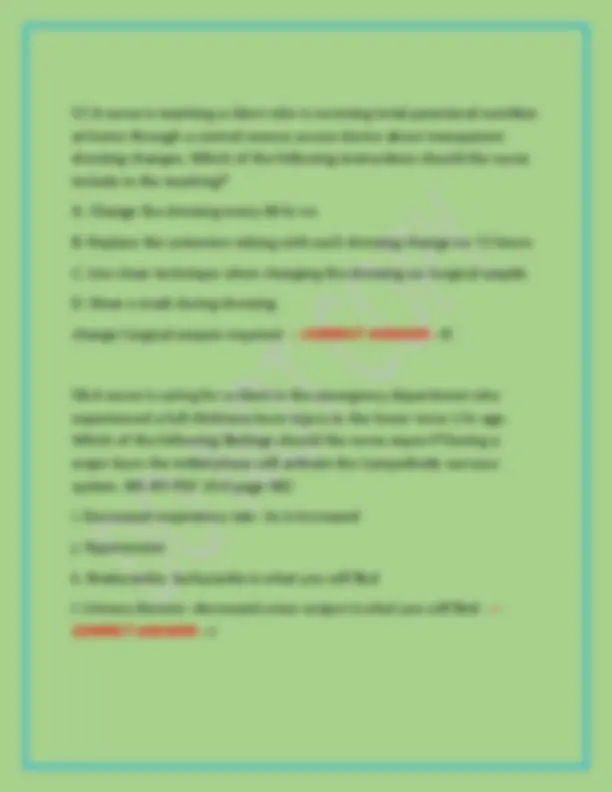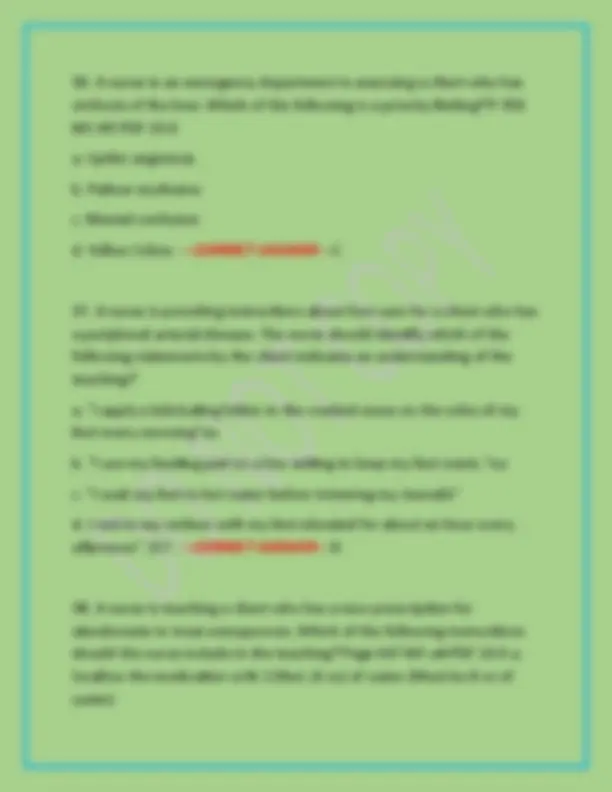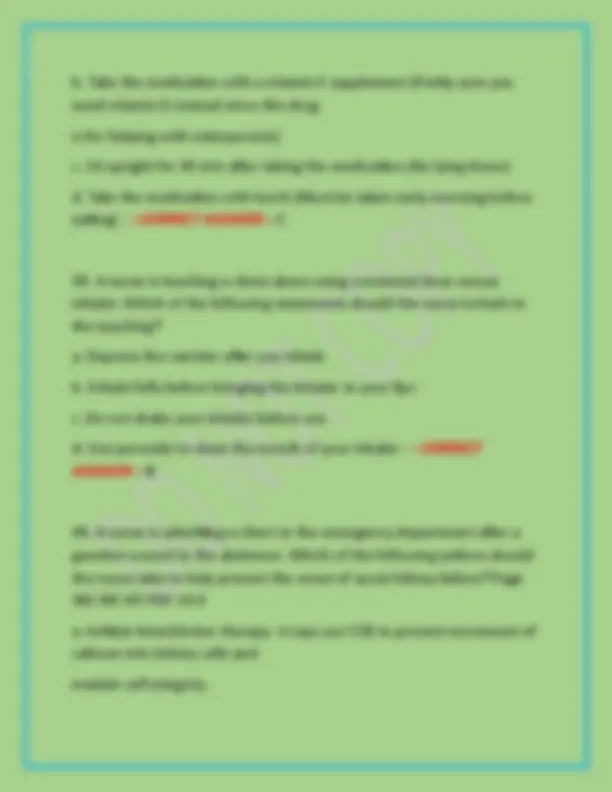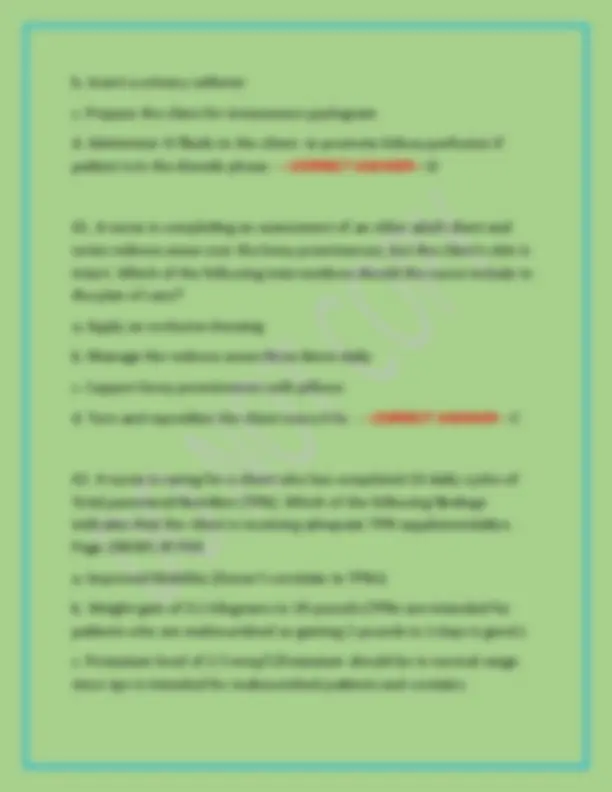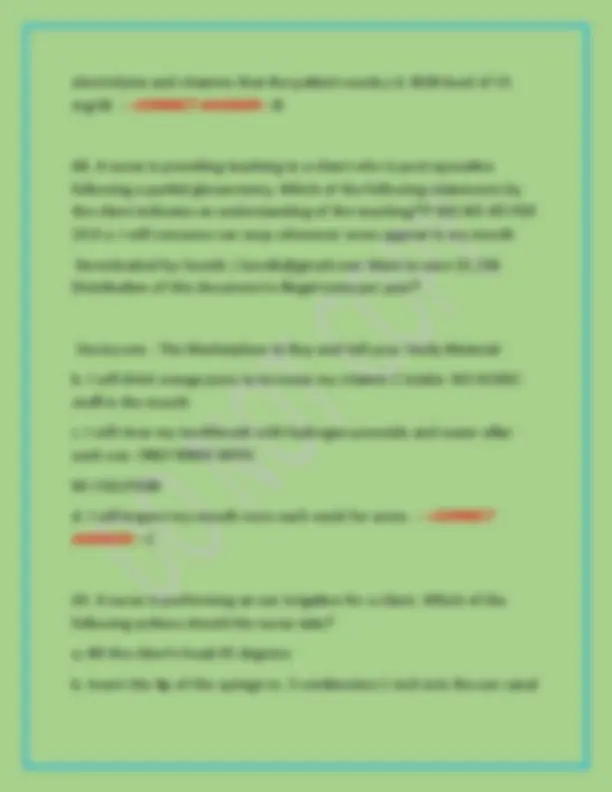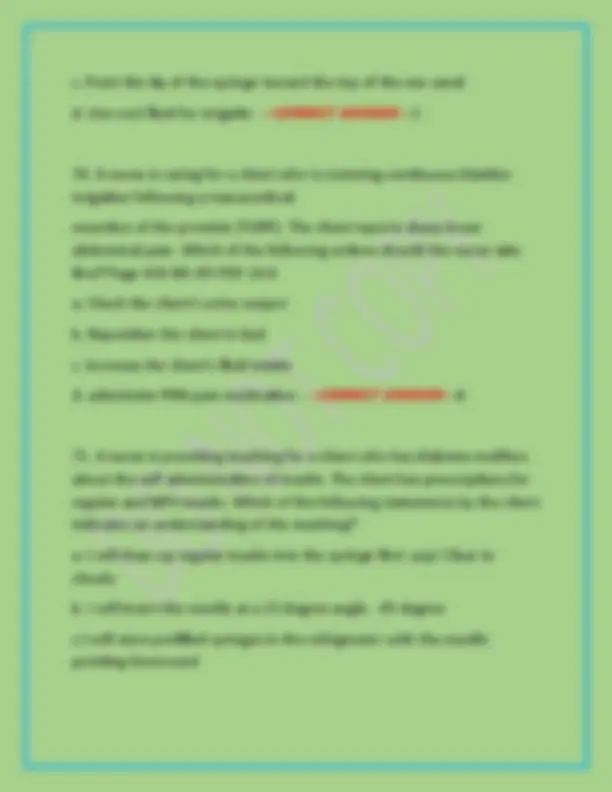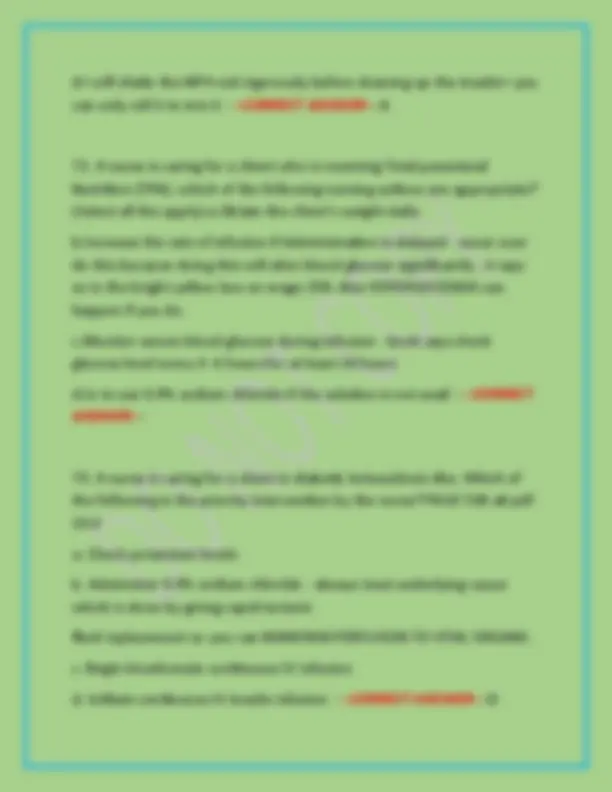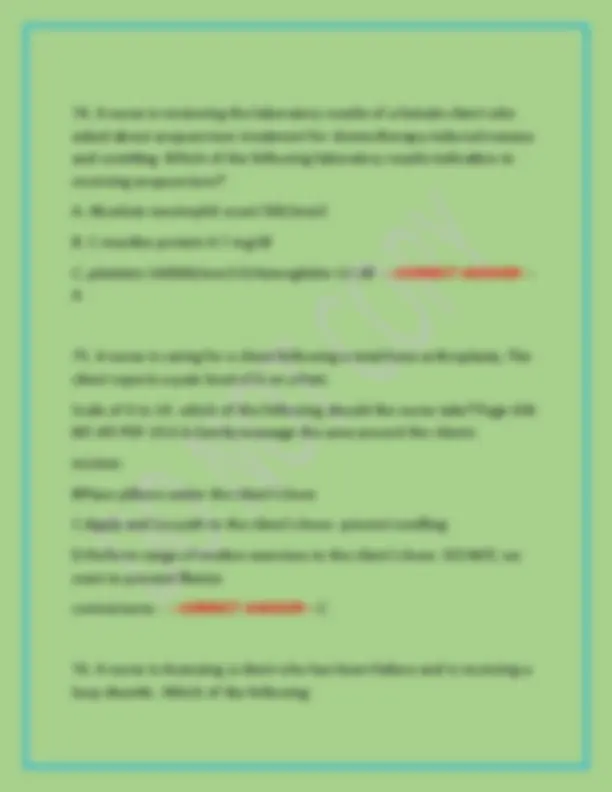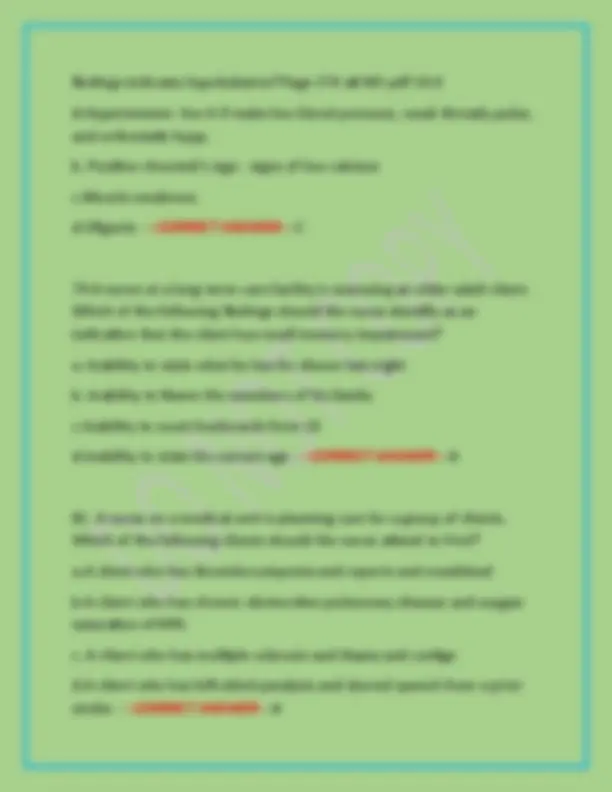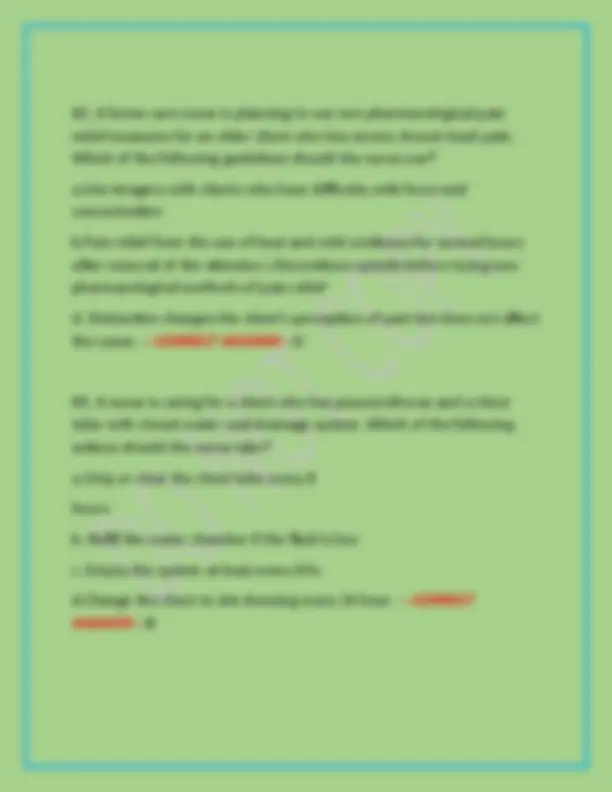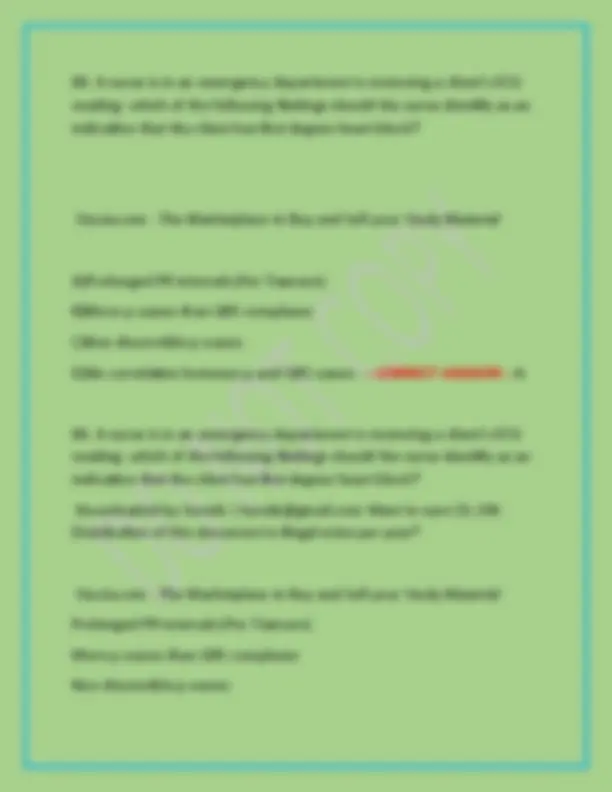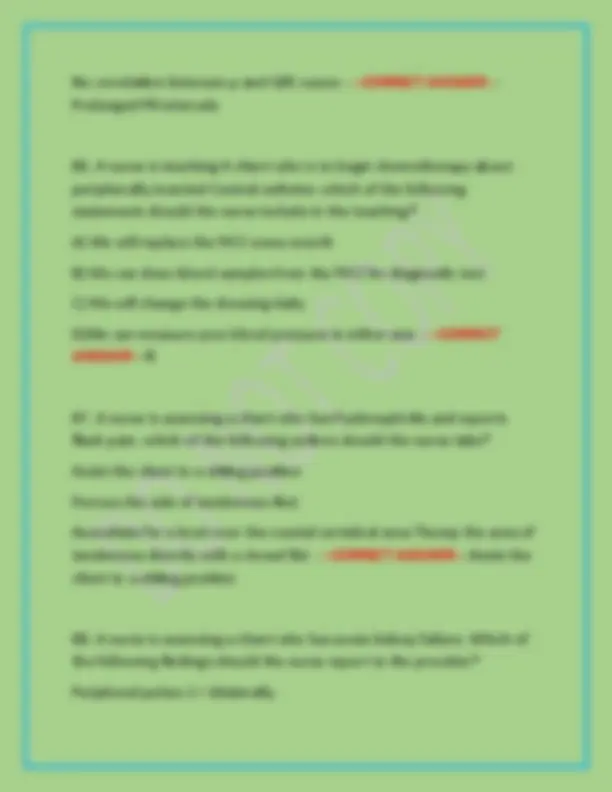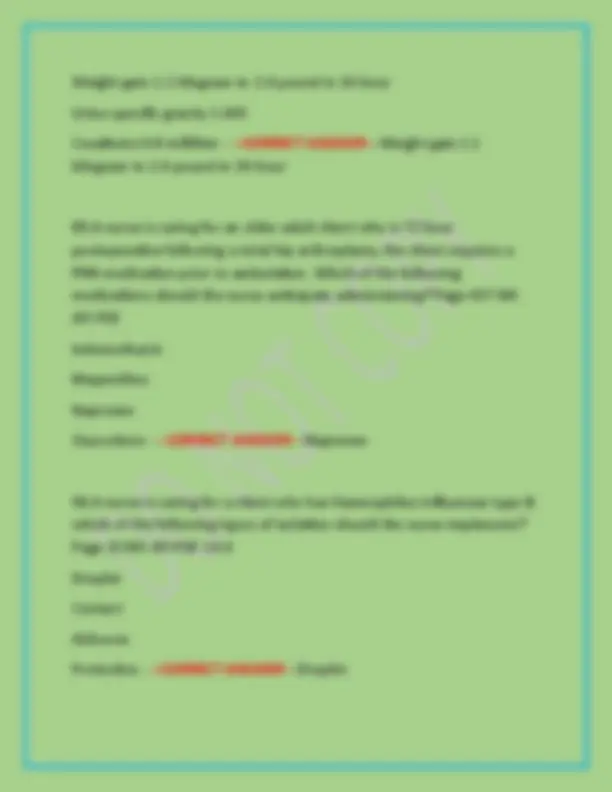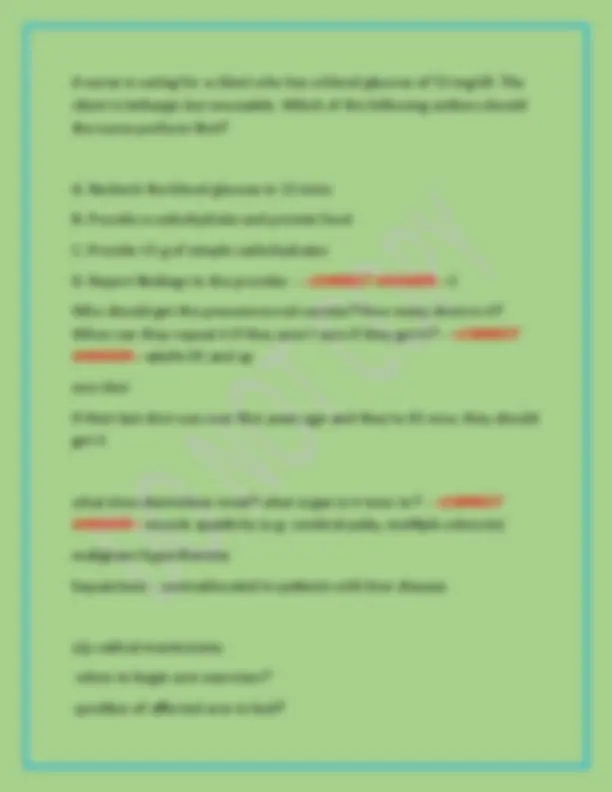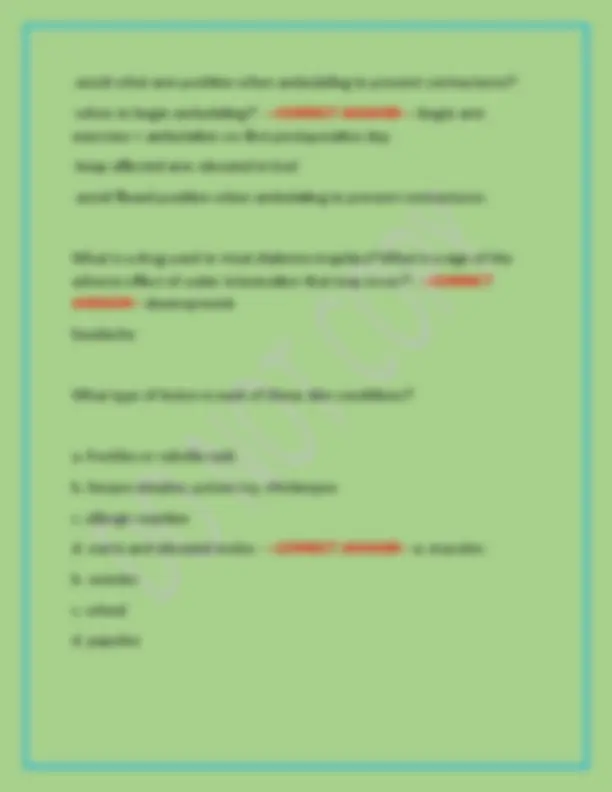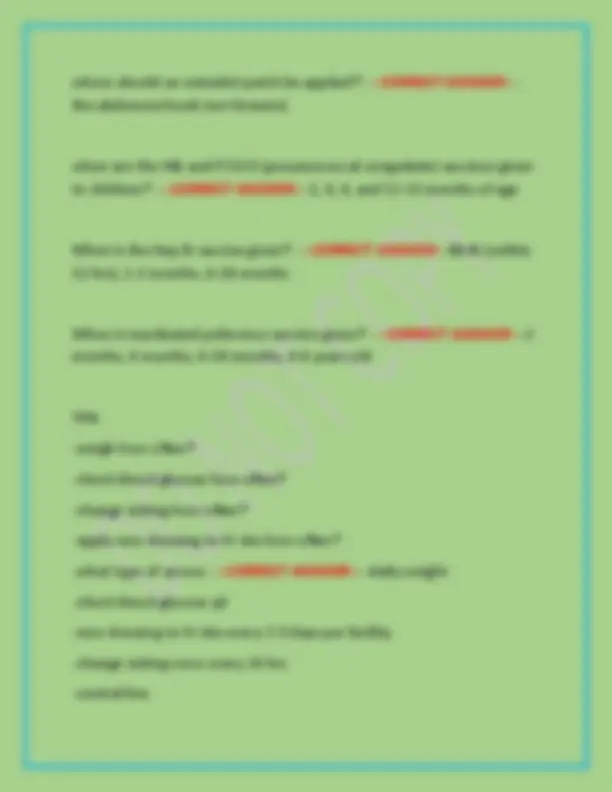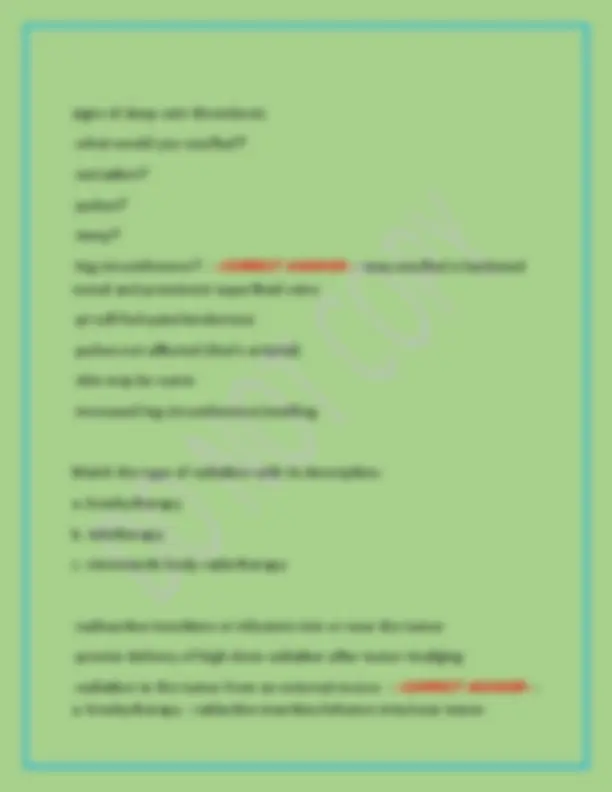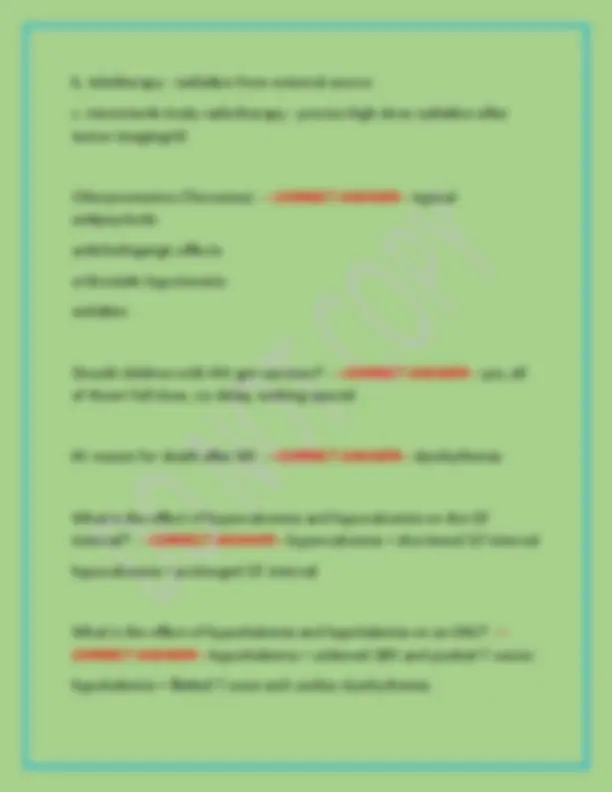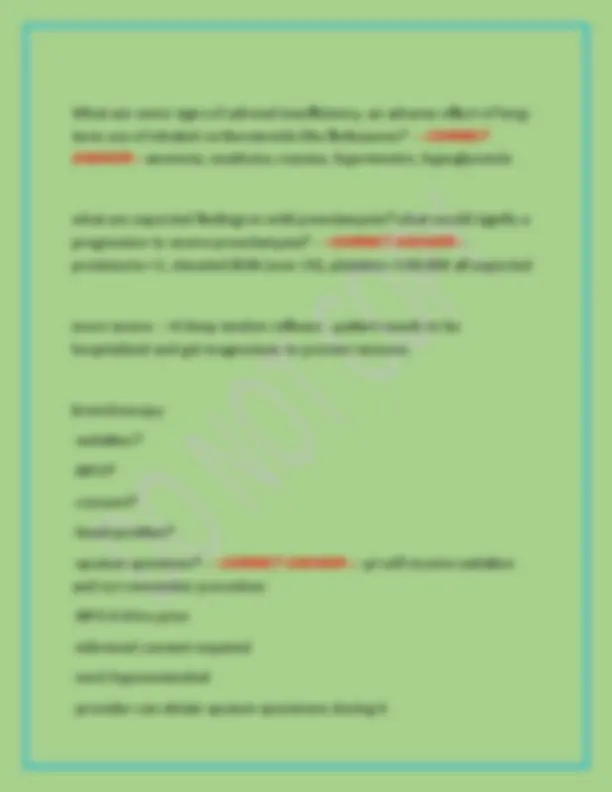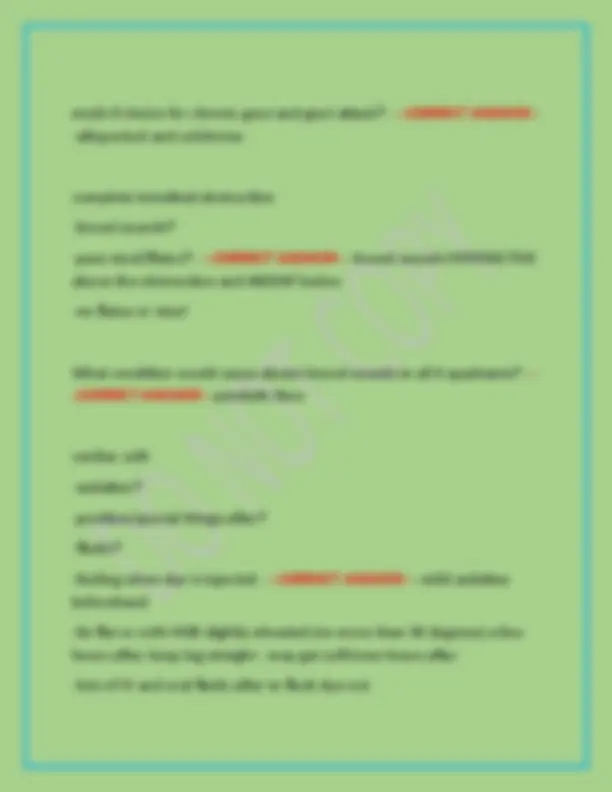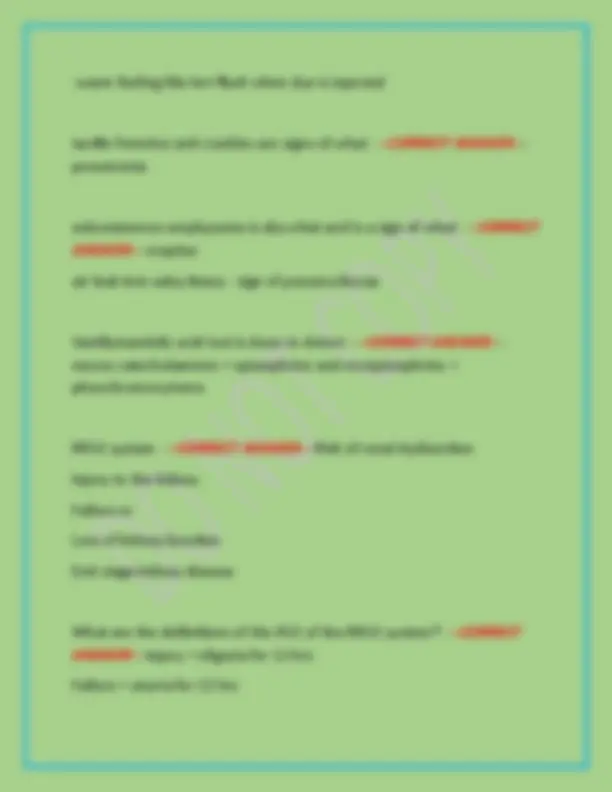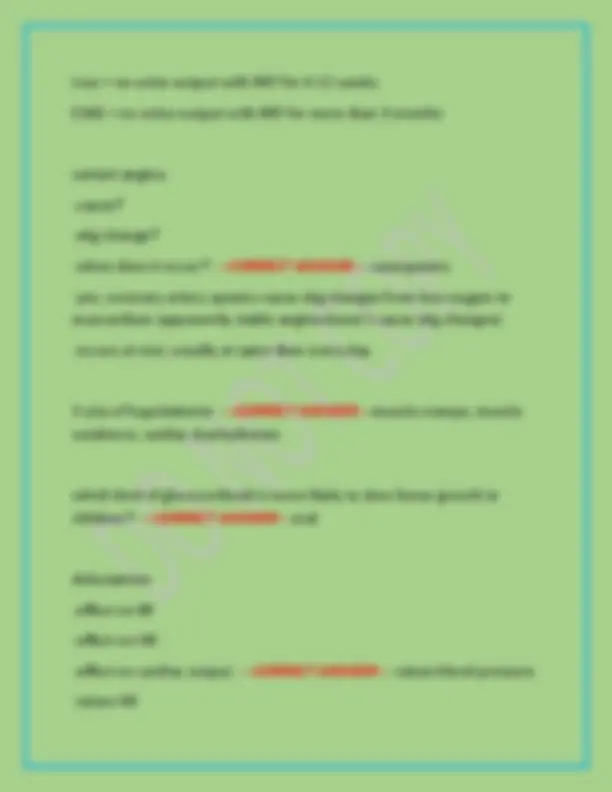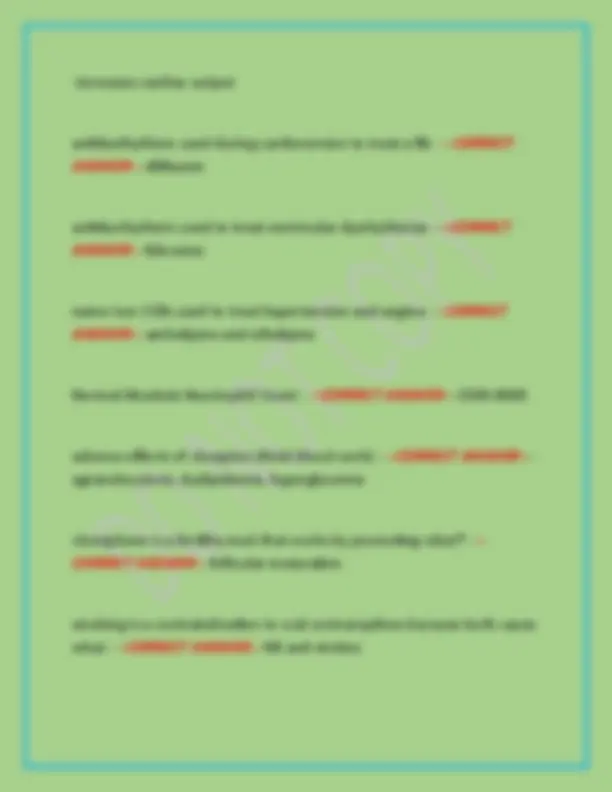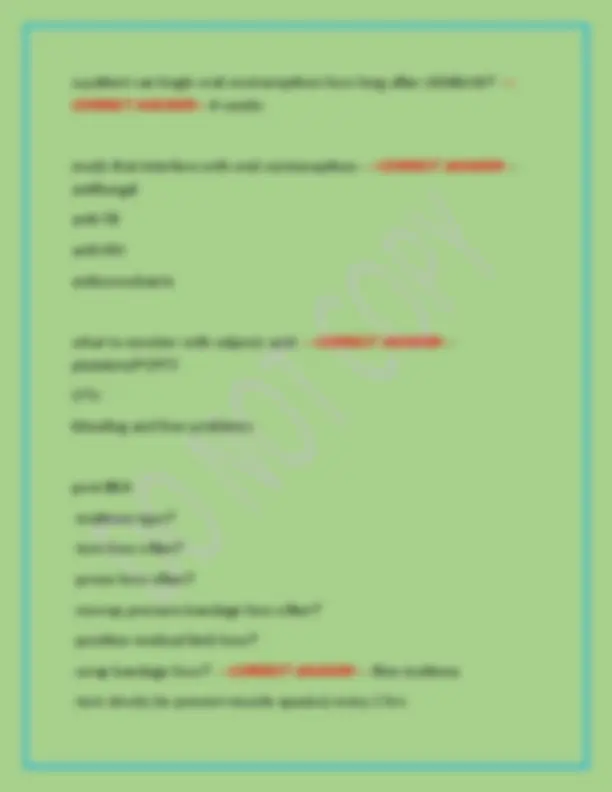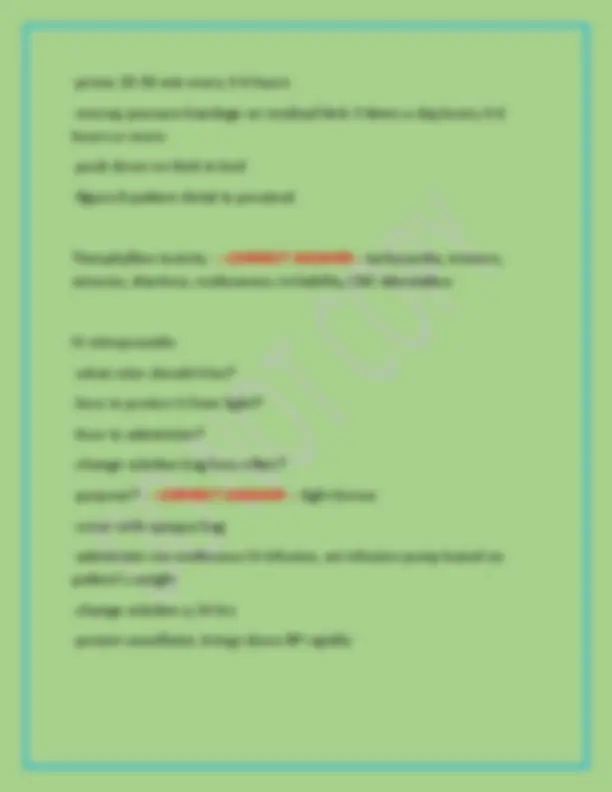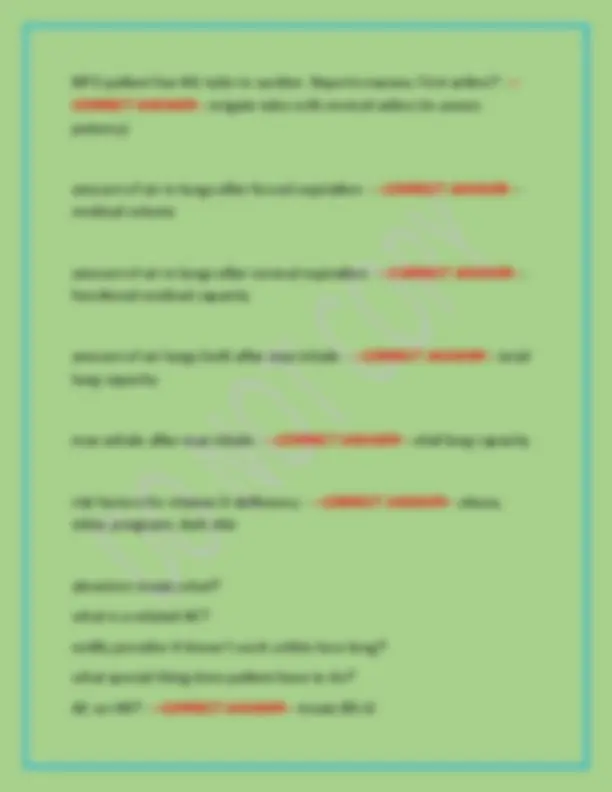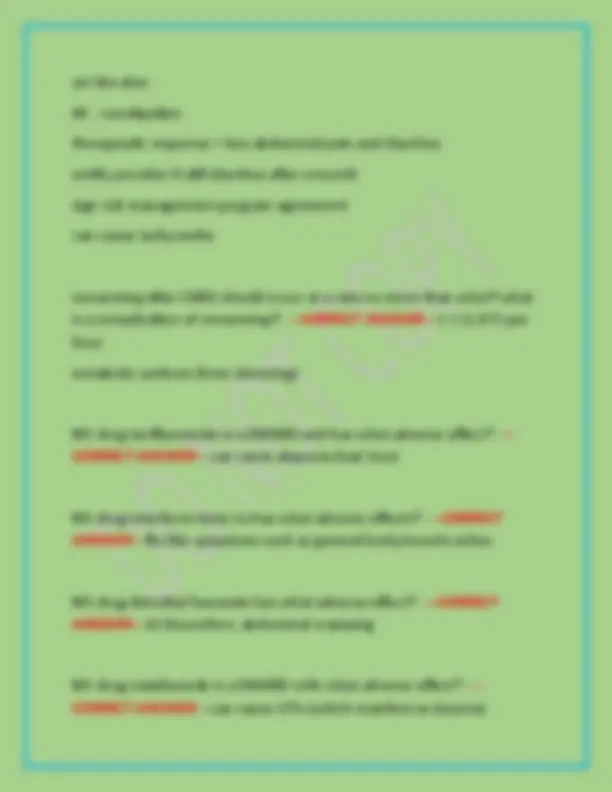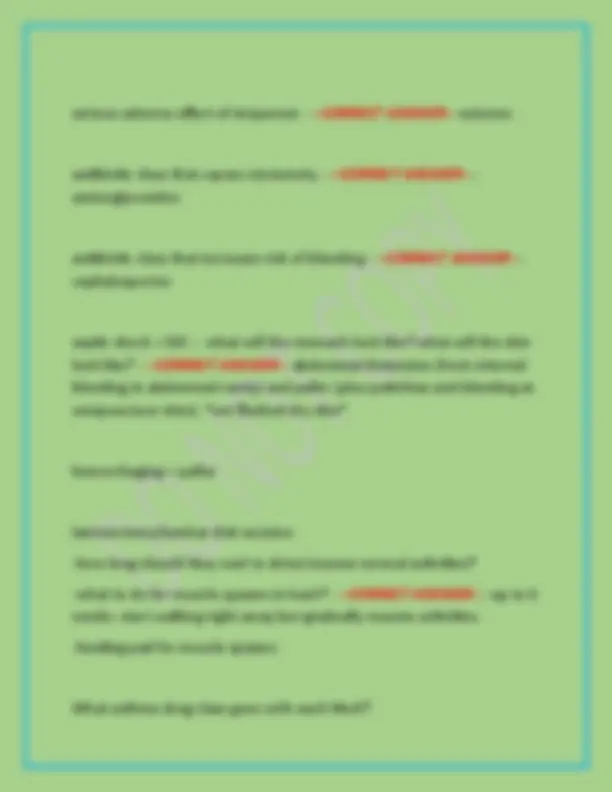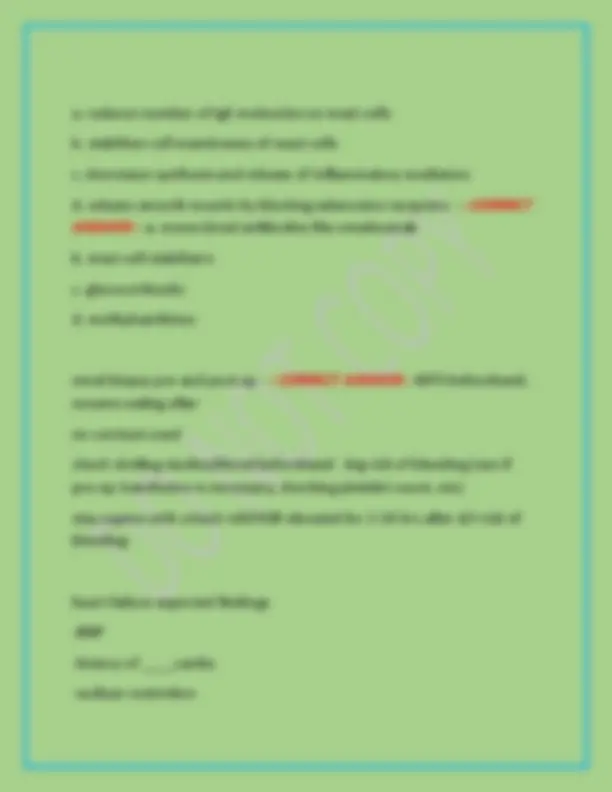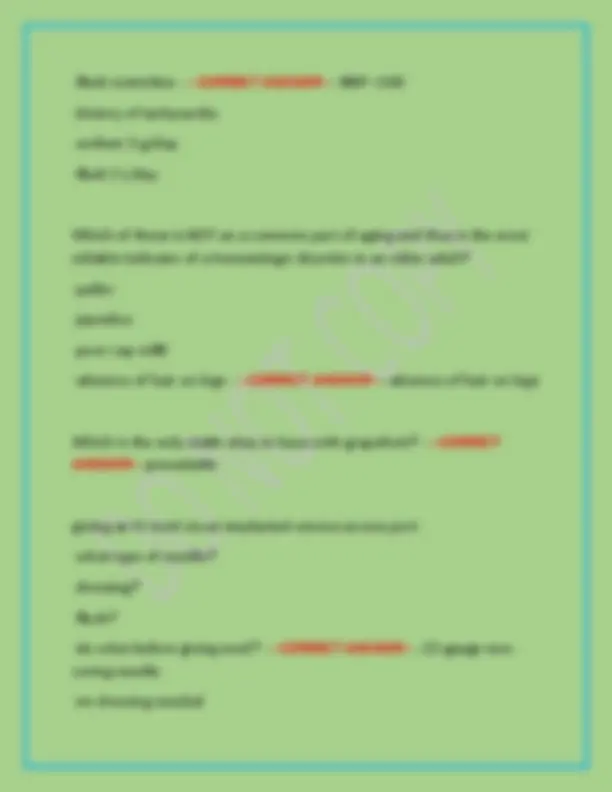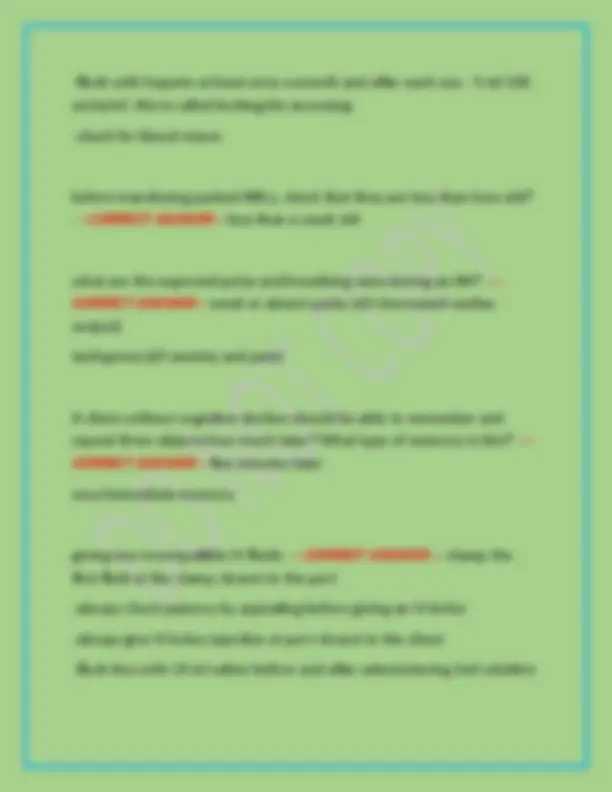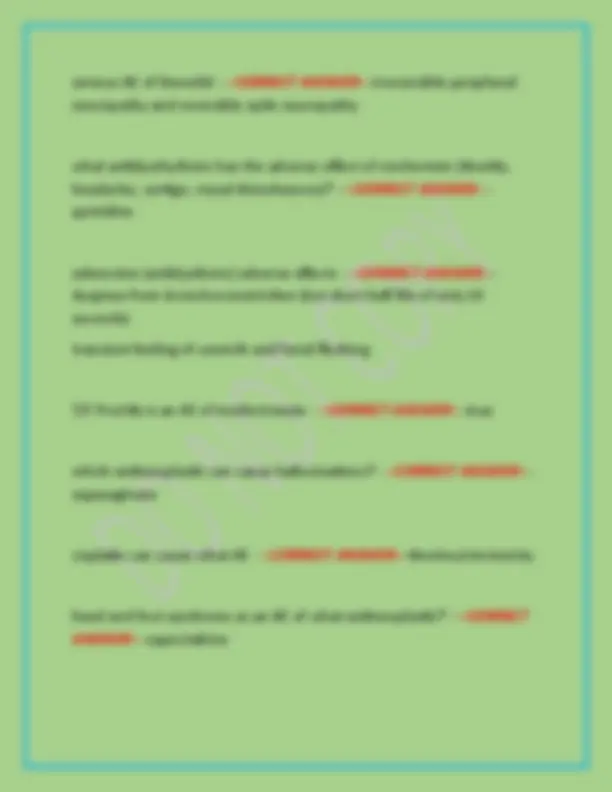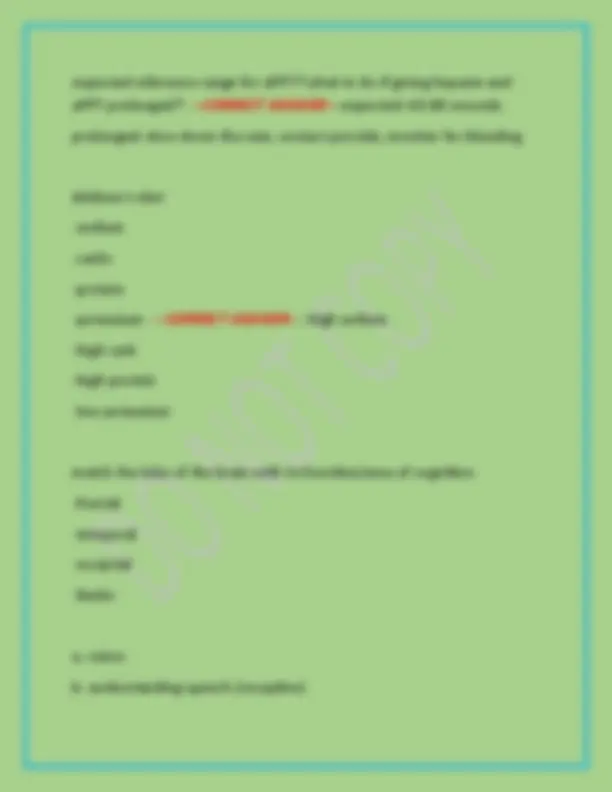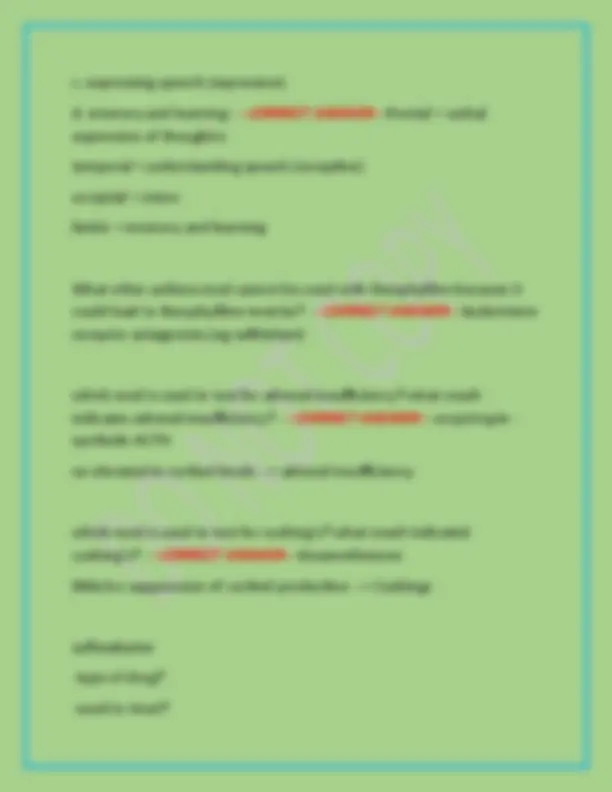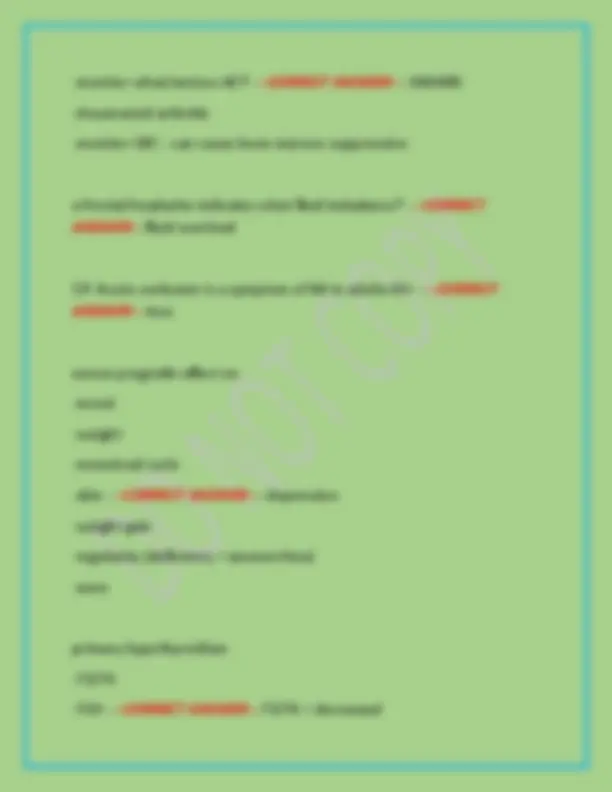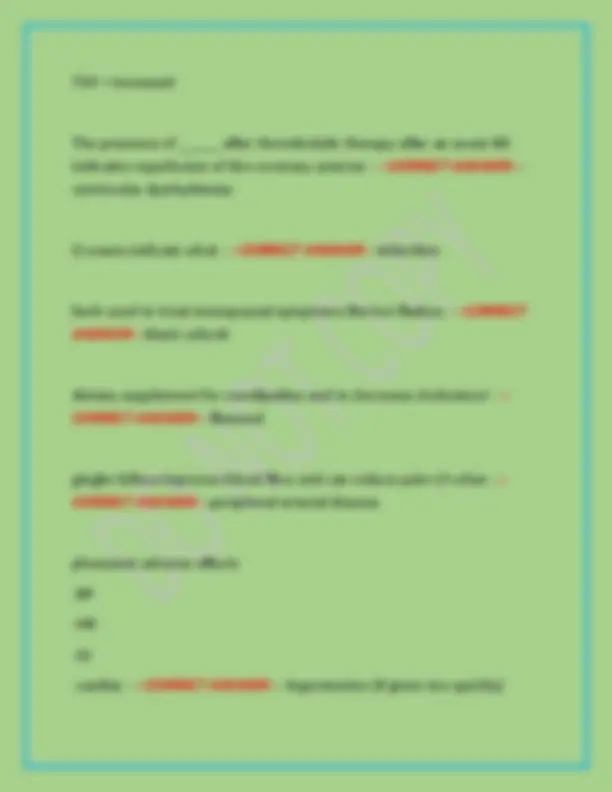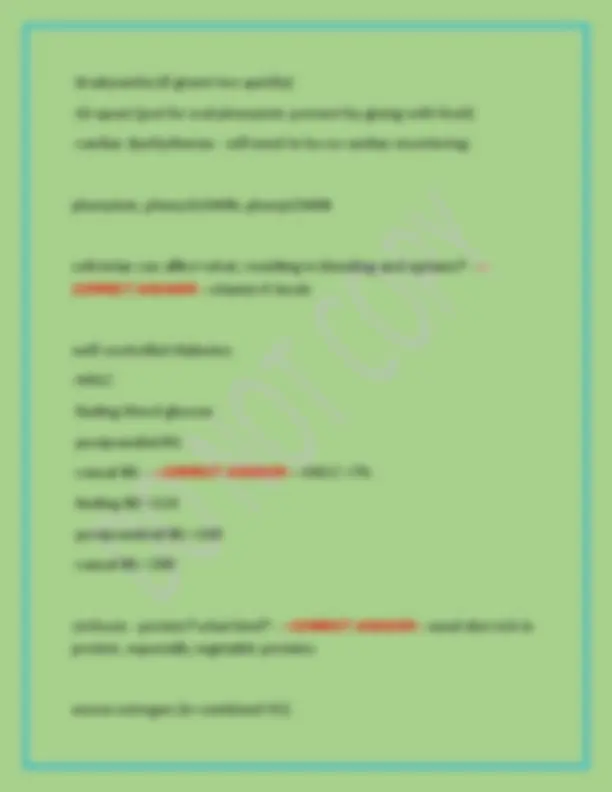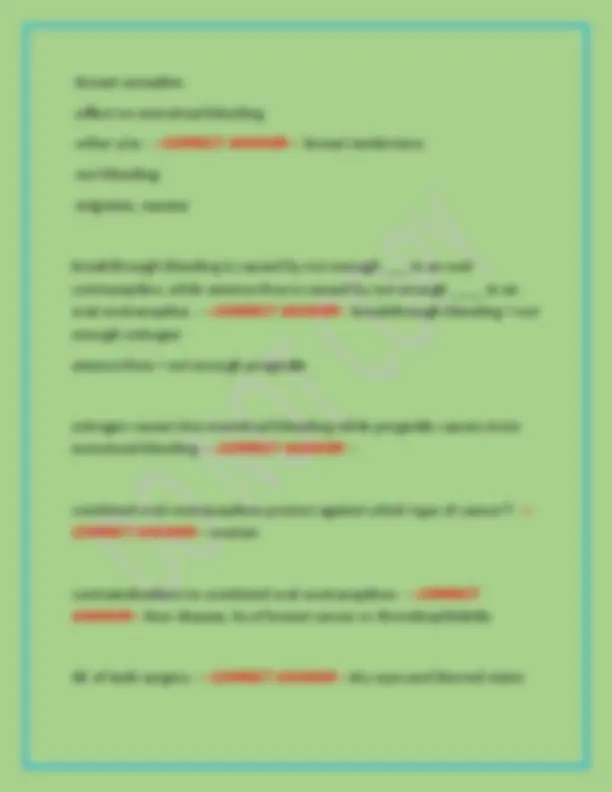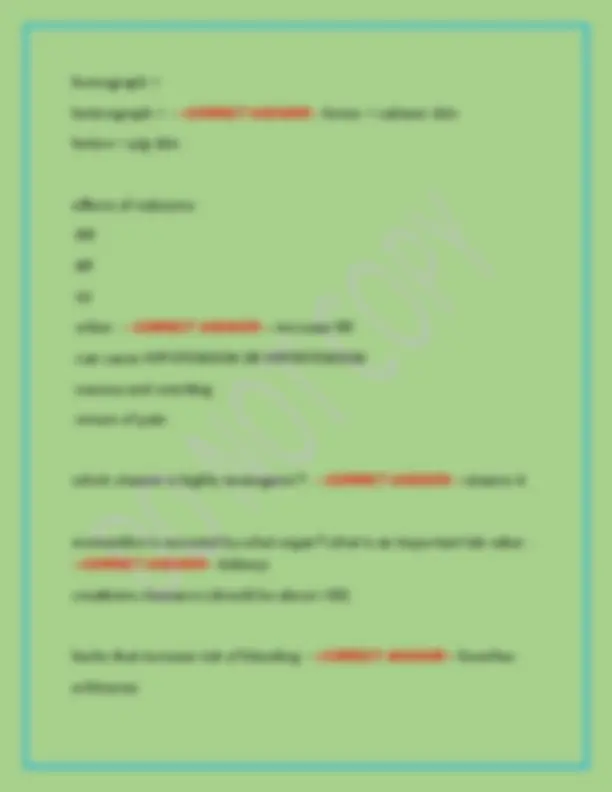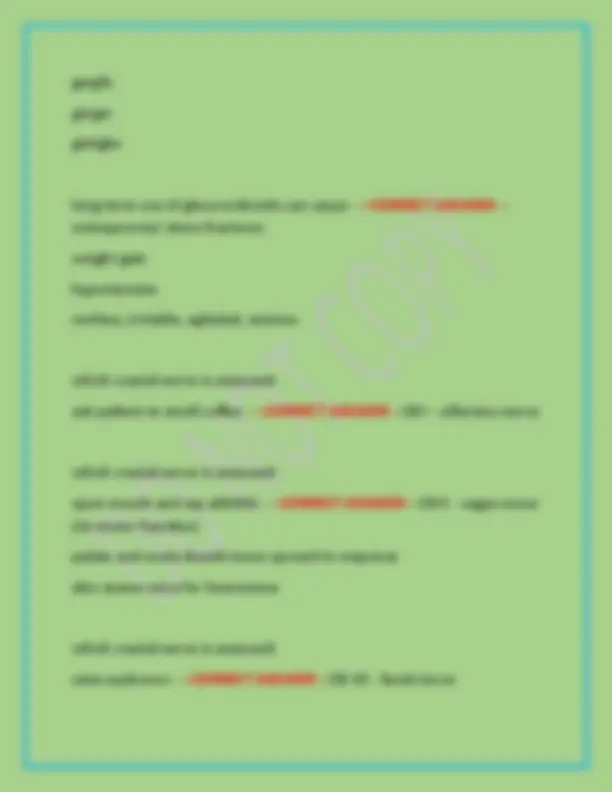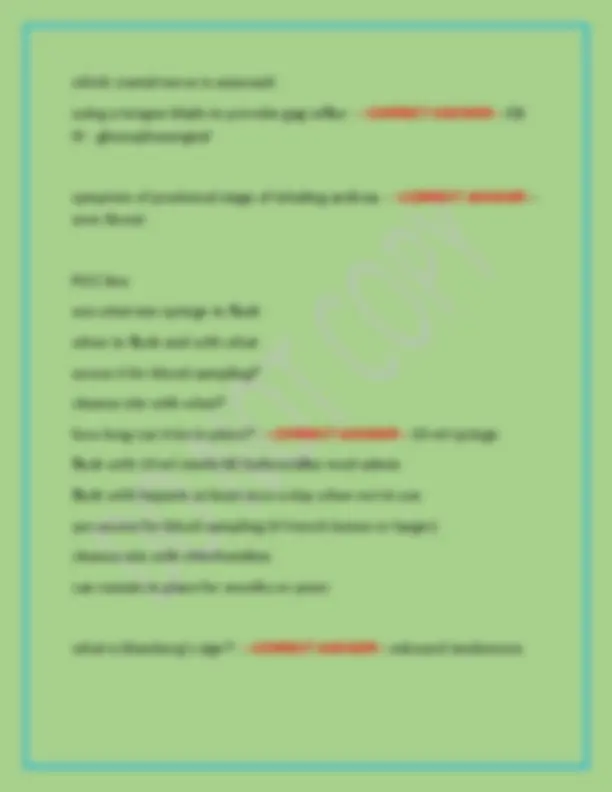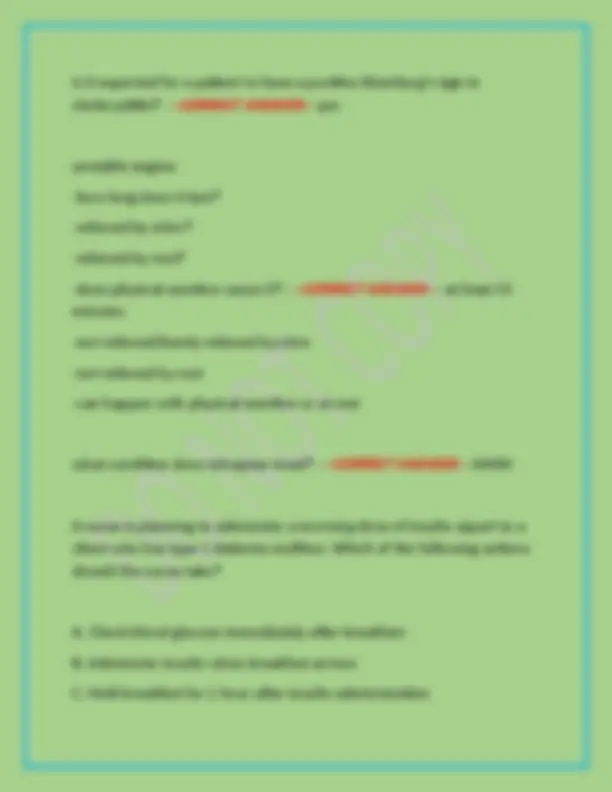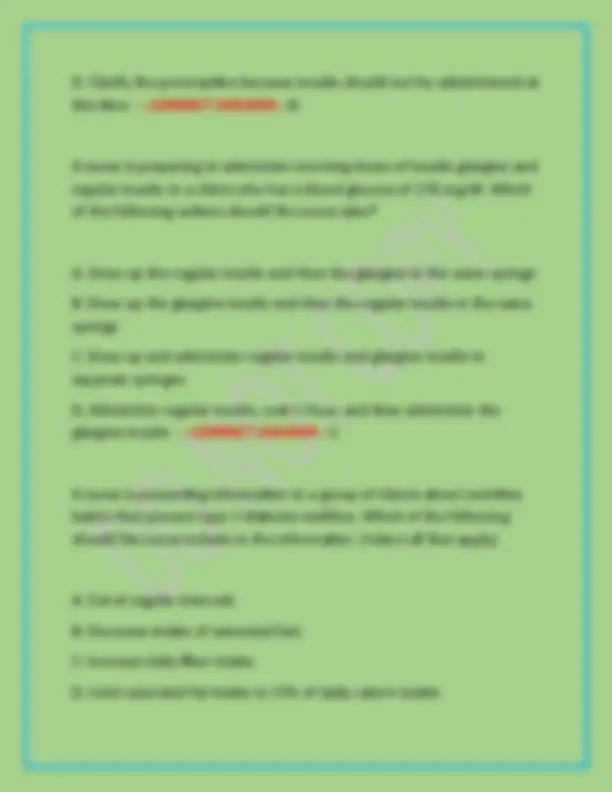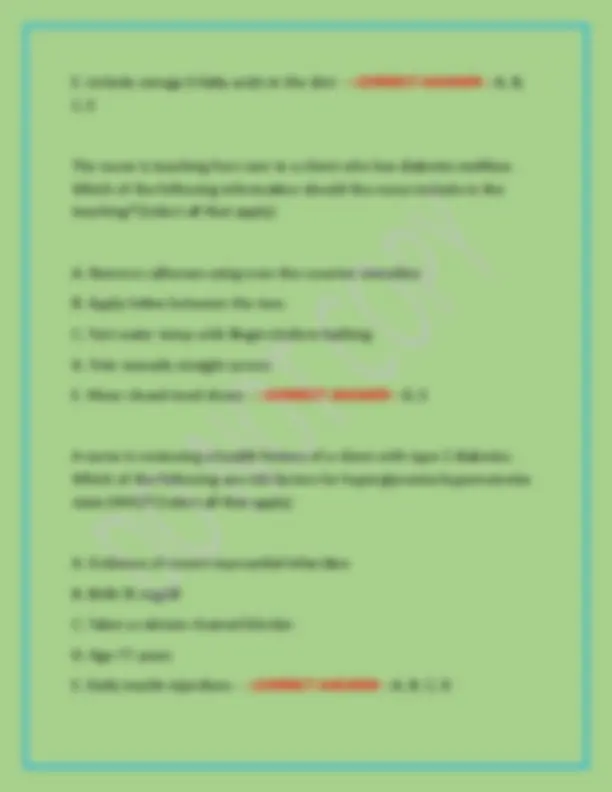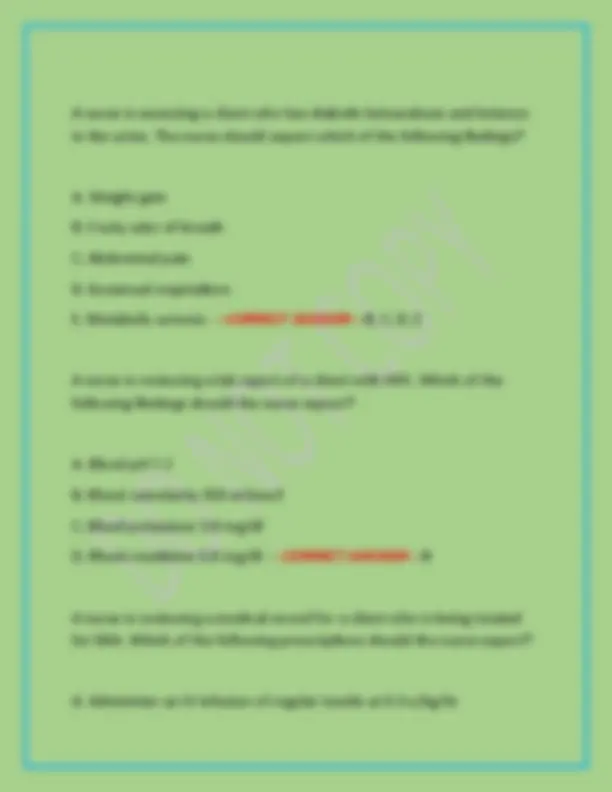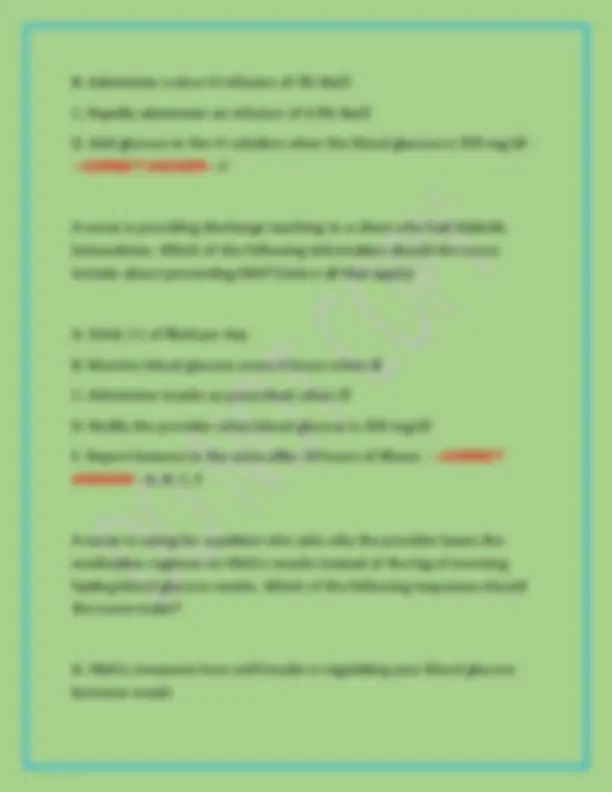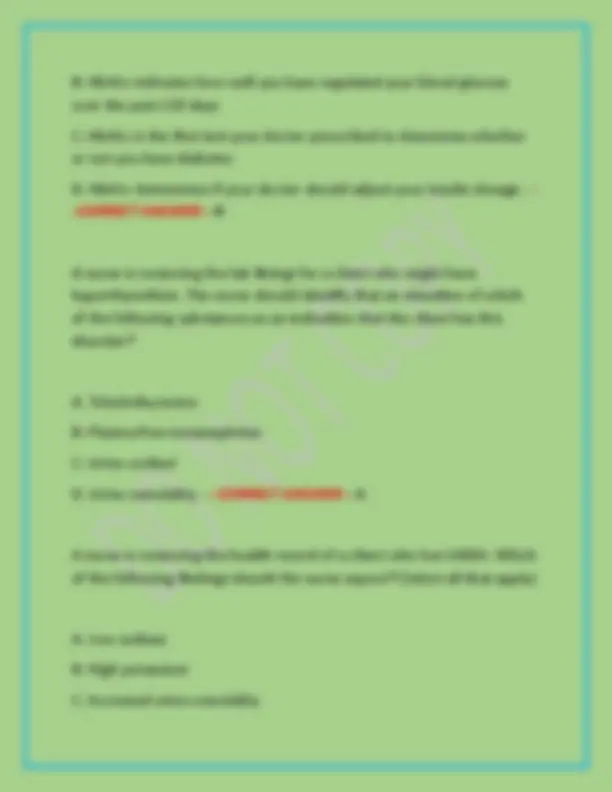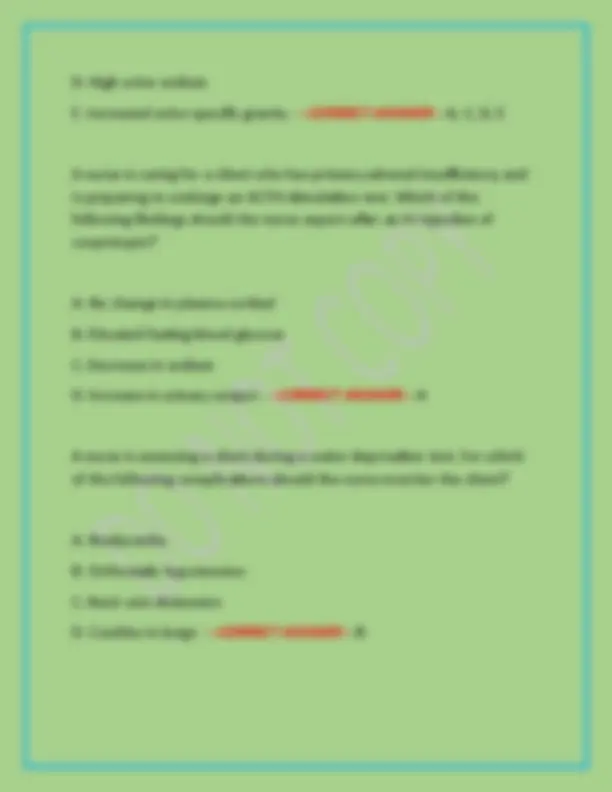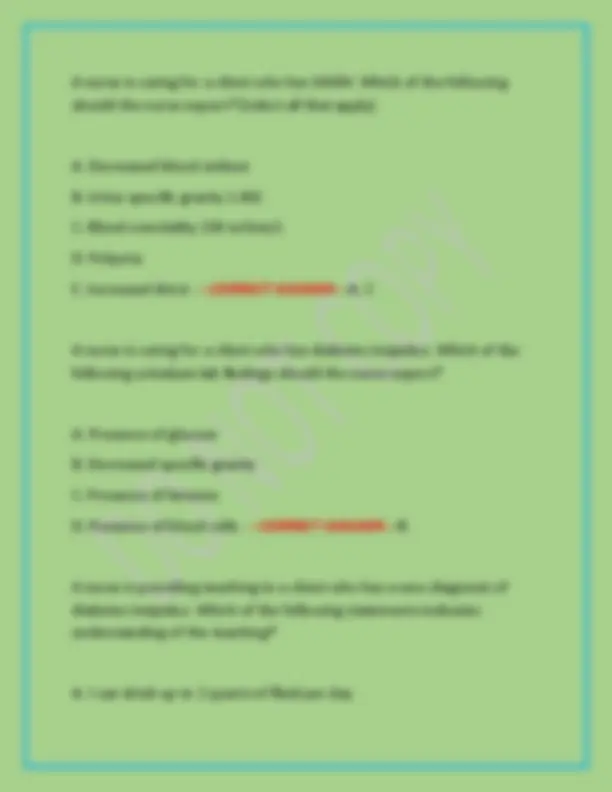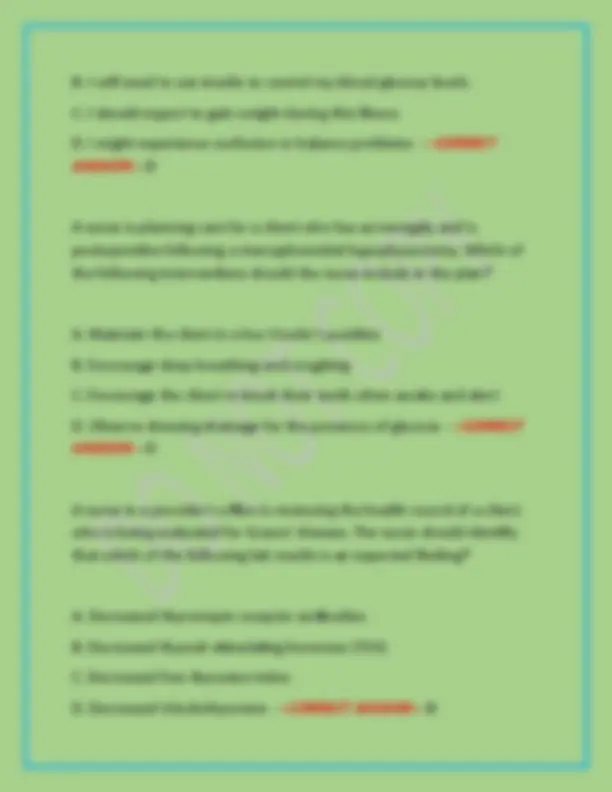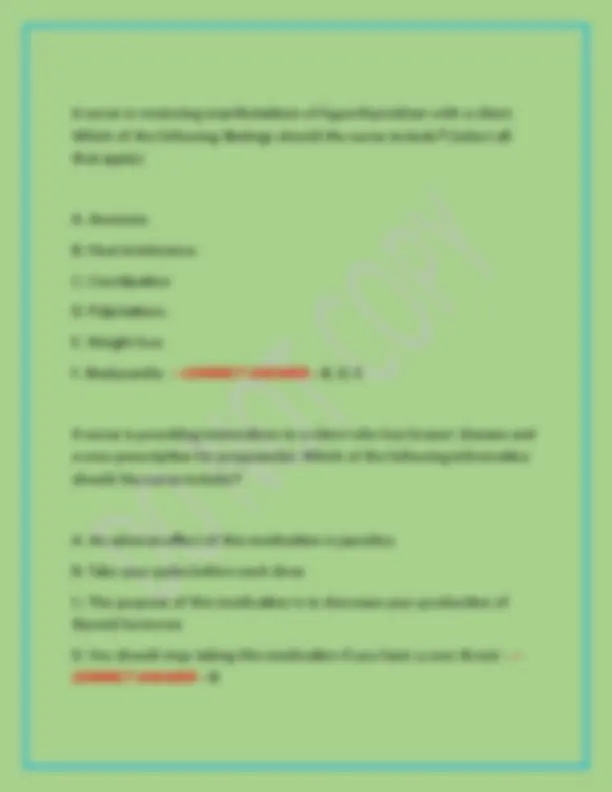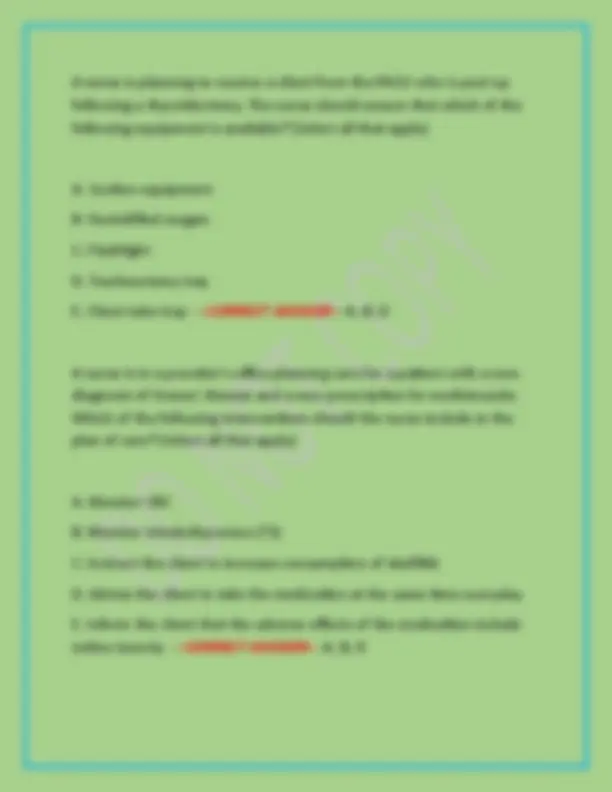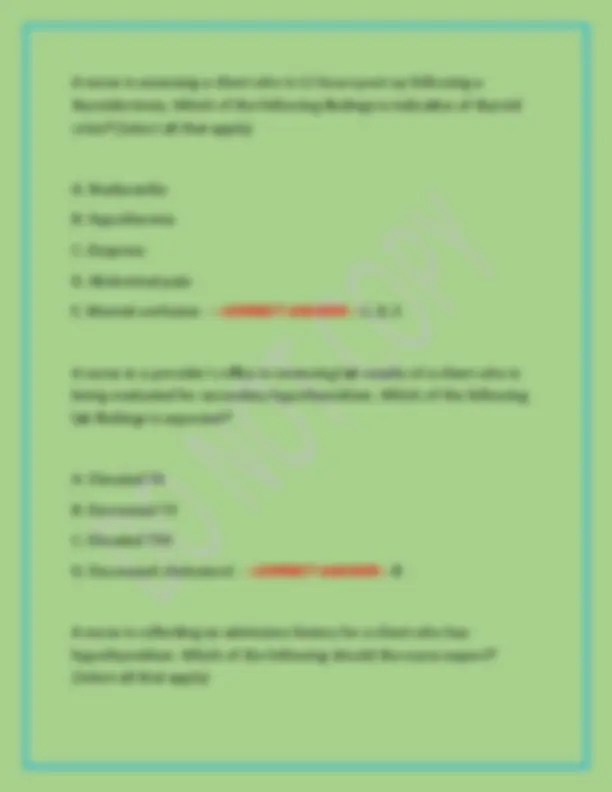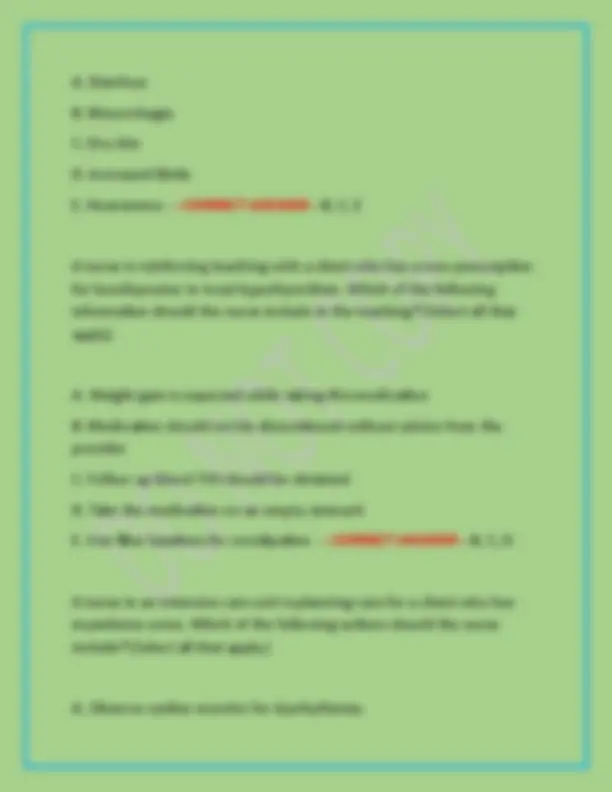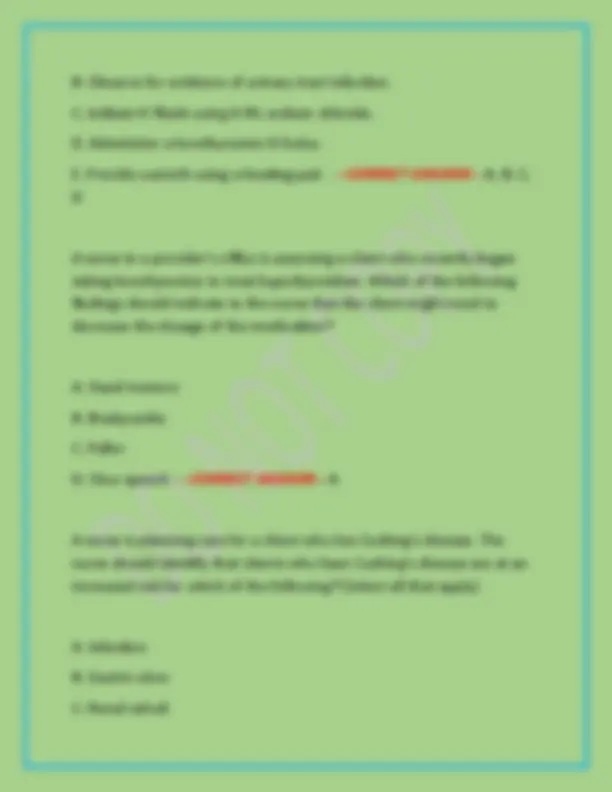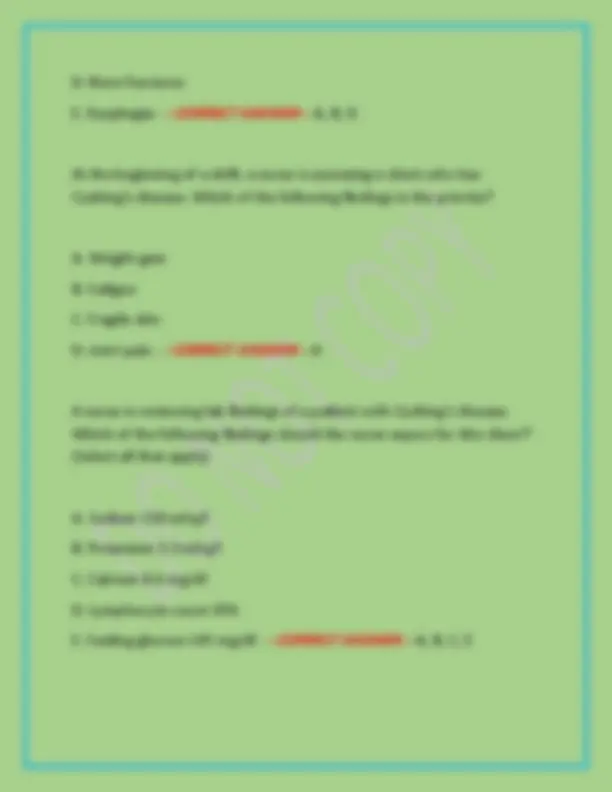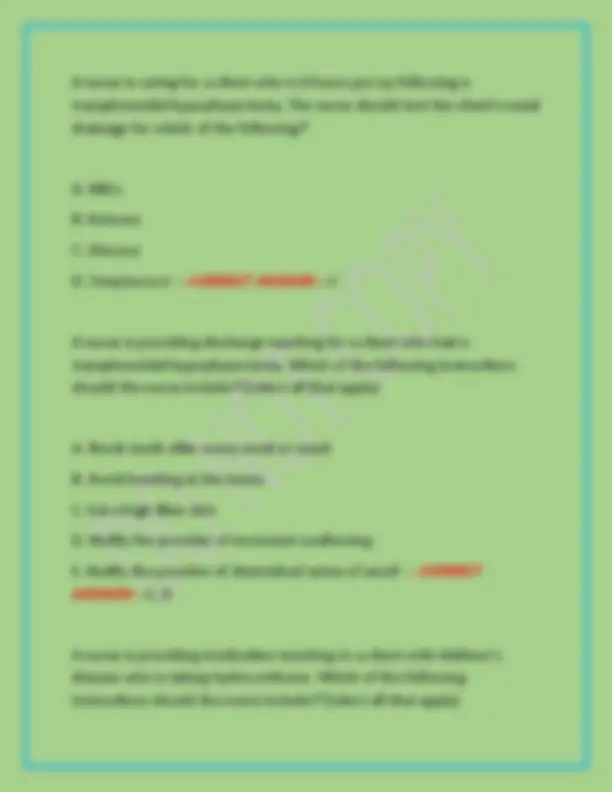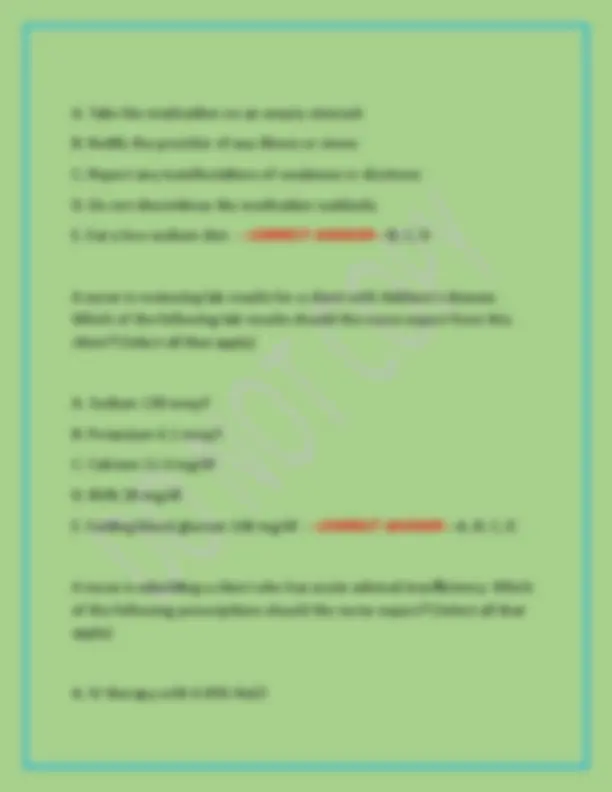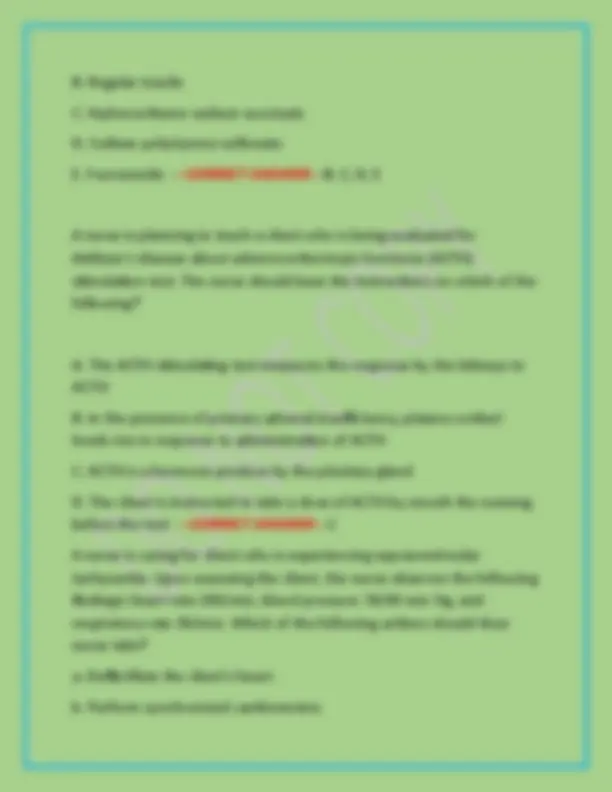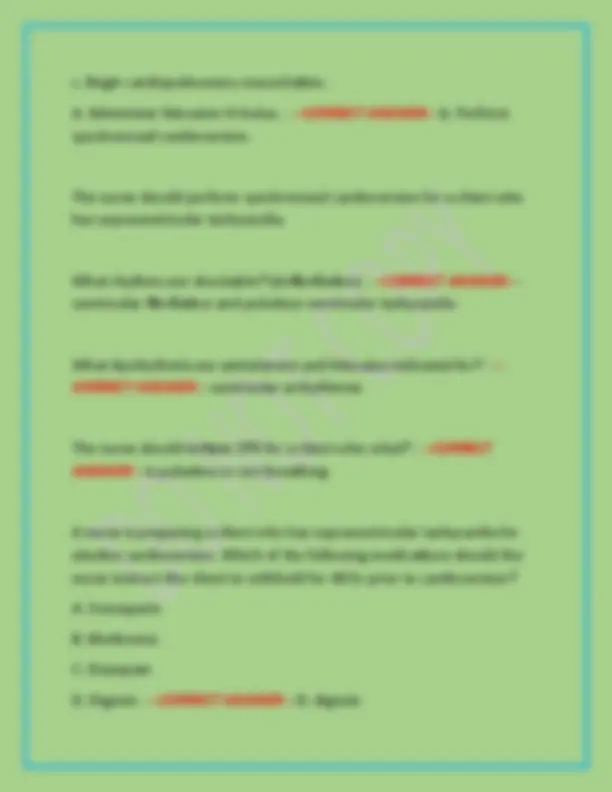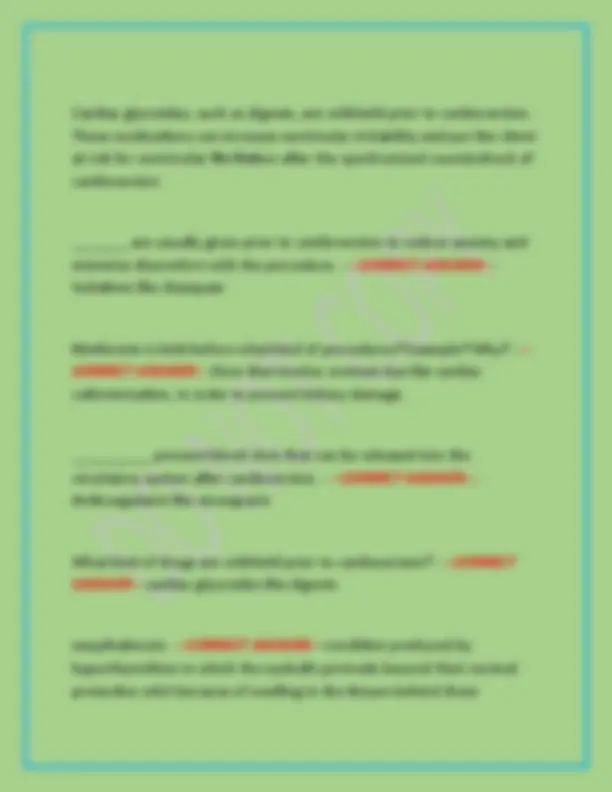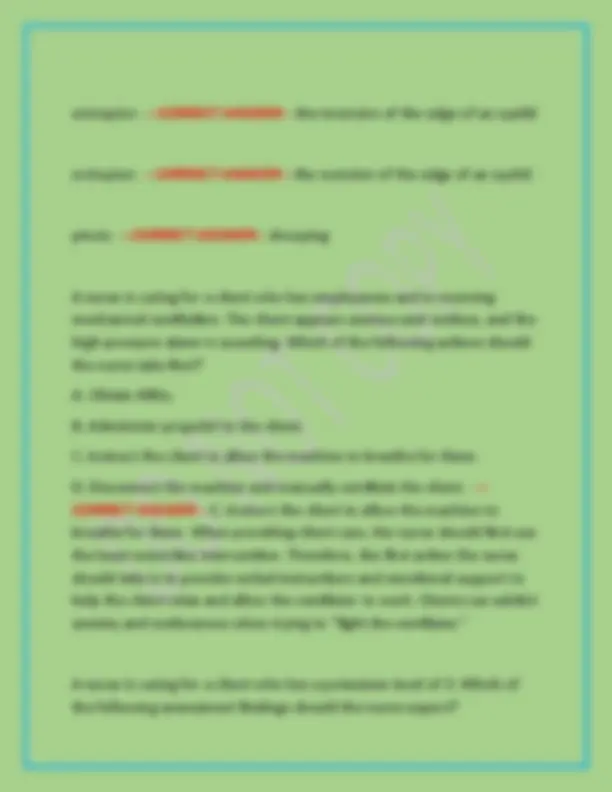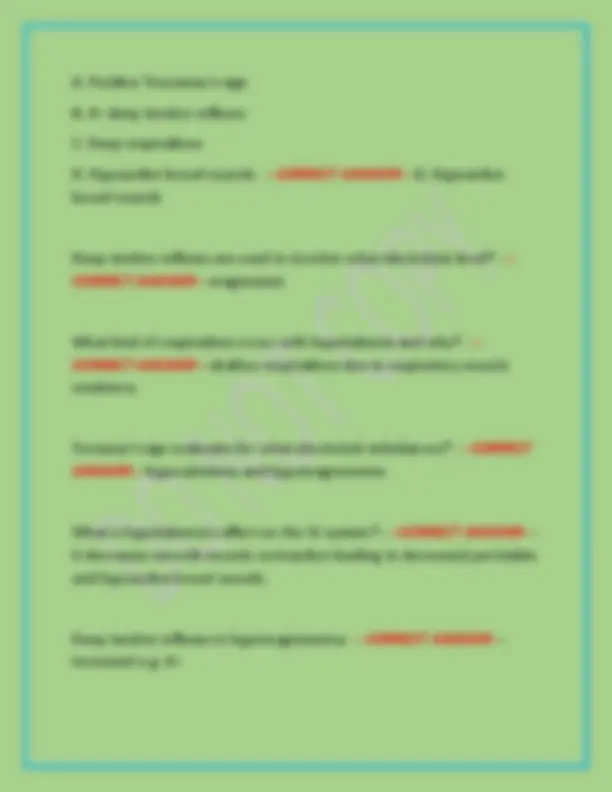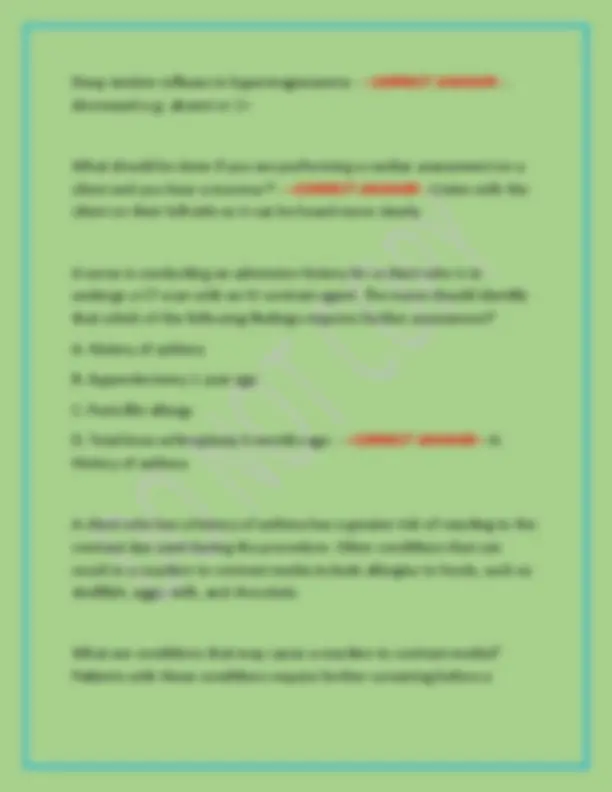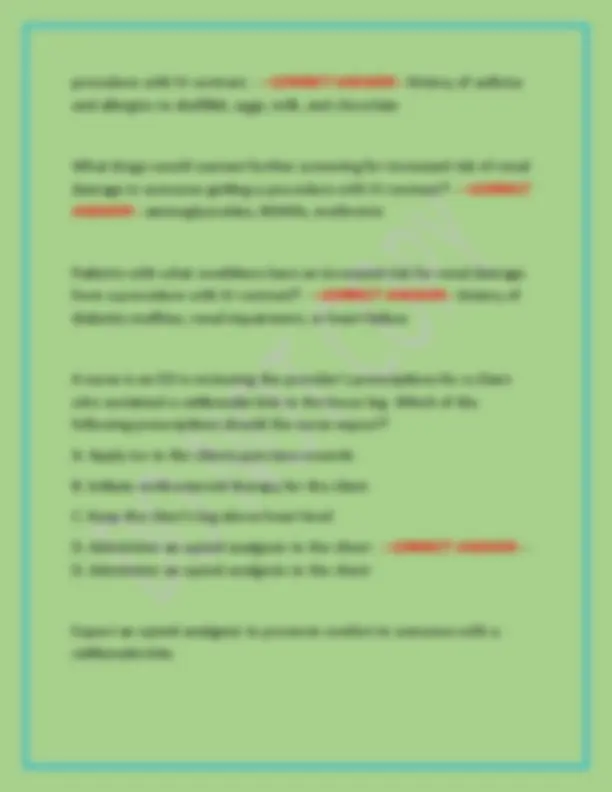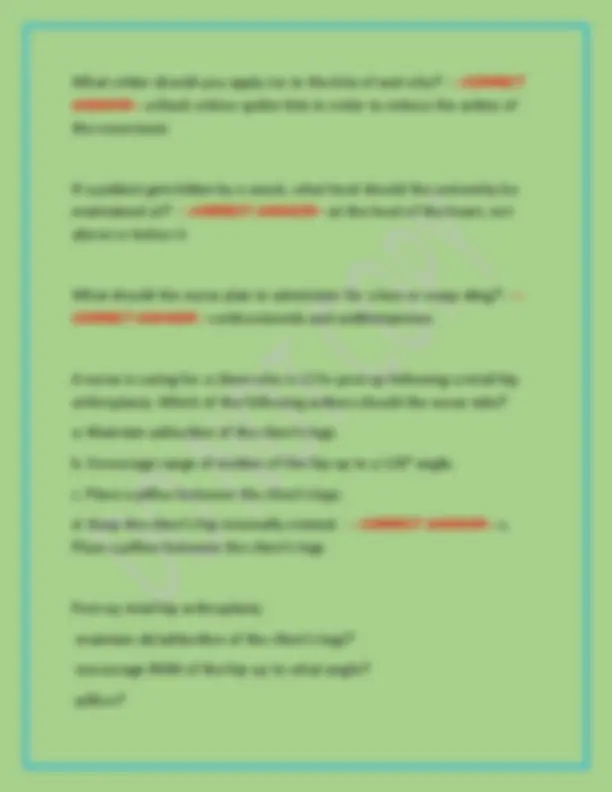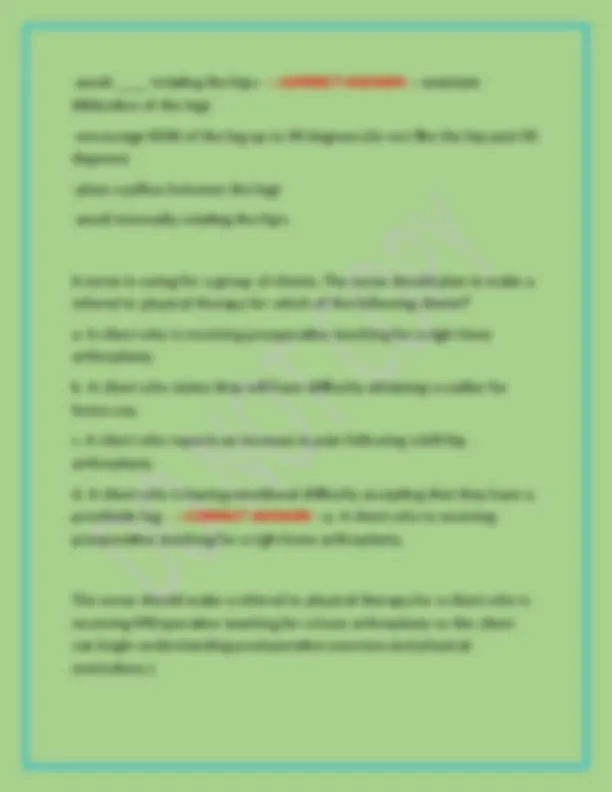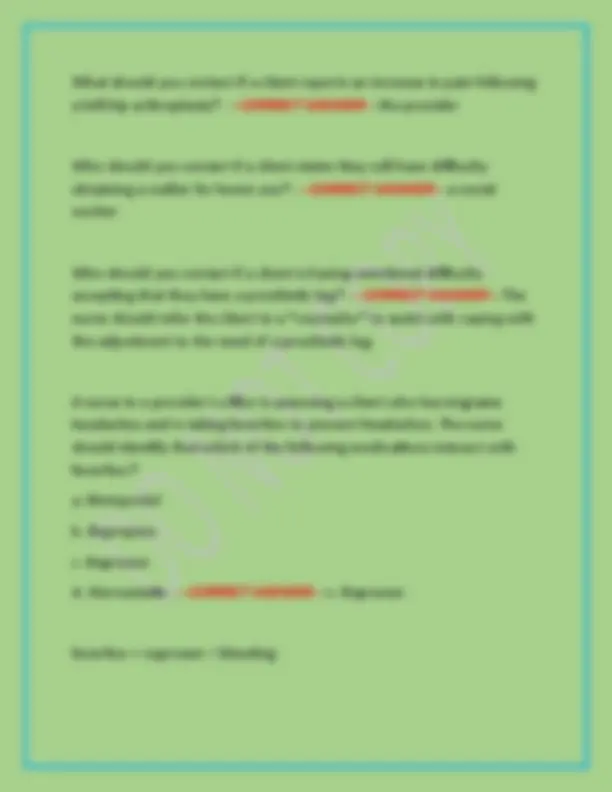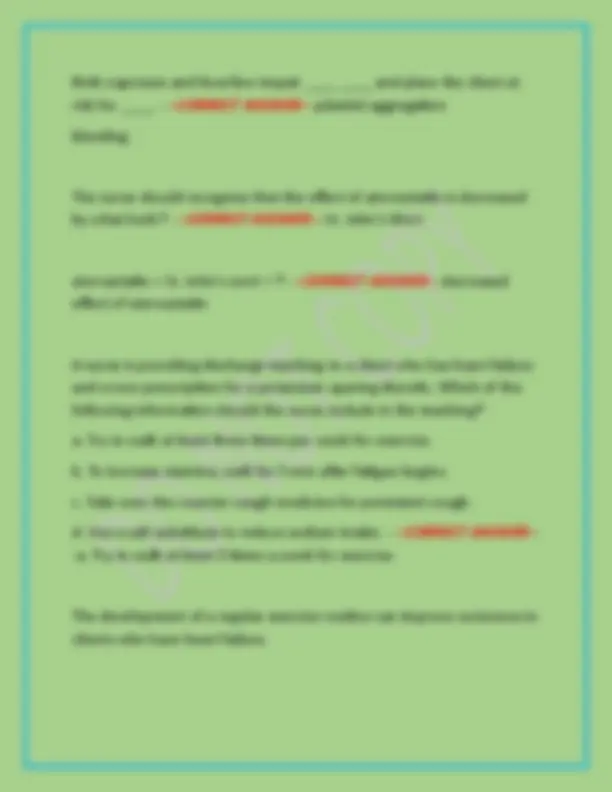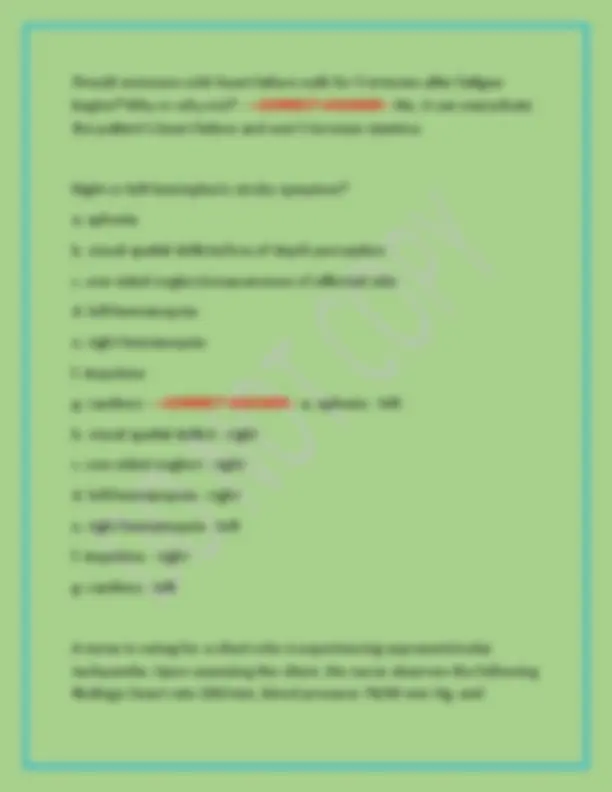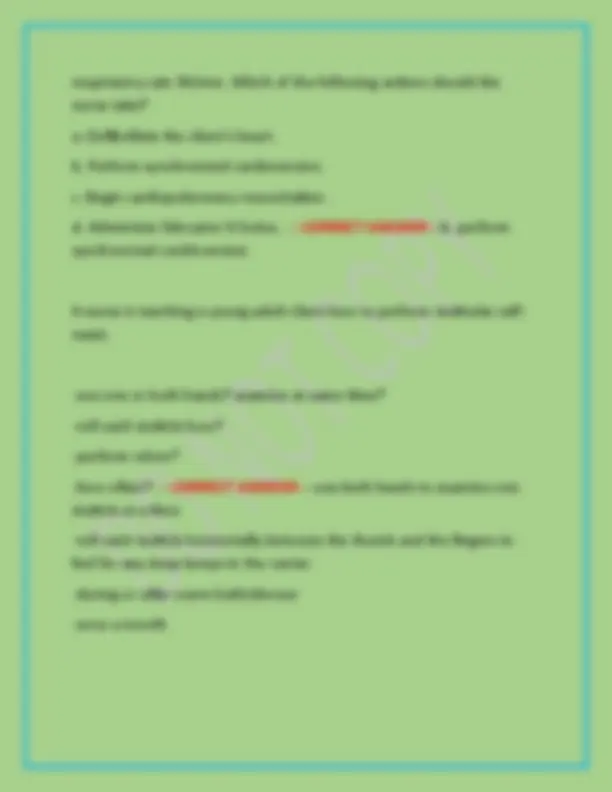Download ATI MED SURG EXAM 1 | A+ GRADED LATEST VERIFIED VERSION WITH 100% CORRECT ANSWERS FROM REA and more Exams Nursing in PDF only on Docsity!
ATI MED SURG EXAM 1 | A+
GRADED LATEST VERIFIED
VERSION WITH 100% CORRECT
ANSWERS FROM REAL PAST
EXAMS | 2025 EDITION
- A nurse is admitting a client who has arthritic pain and reports taking ibuprofen several times daily for 3 years. Which of the following test should the nurse monitor? a. Fasting blood glucose b. Stool for occult blood c. Urine for white blood cells d. Serum calcium - --CORRECT ANSWER-- - B Rationale:ATI Pharm 16. Pg. 485 Ibuprofen (NSAIDs) monitor for GI bleed (bloody, tarry stools, abd pain).
- A nurse in the emergency department is assessing a client. Which of the following actions should the nurse take first (Click on the "Exhibit" button for additional information about the client. There are three tabs that contain separate categories of data.) a. Obtain a sputum sample for culture b. Prepare the client for a chest x-ray c. Initiate airborne precautions d. Administer ondansertron. - --CORRECT ANSWER-- -
- A nurse is contacting the provider for a client who has cancer and is experiencing breakthrough pain. Which of the following prescriptions should the nurse anticipate? a. Transmucosal fentanyl
b. Intramuscular meperidine c. Oral acetaminophen d. Intravenous dexamethasone Rationale:ATI pg. 27 - --CORRECT ANSWER-- - A
- A nurse is admitting a client who reports chest pain and has been placed on a telemetry monitor. Which of the following should the nurse analyze to determine whether the client is experiencing a myocardial infarction? a. PR interval b. QRS duration c. T wave d. ST segment - --CORRECT ANSWER-- - D Rationale: ST elevation indicates MI. ST depression indicates ischemia nurse is teaching a client who has ovarian cancer about skin care following radiation treatment. Which of the following instructions should the nurse include? a. Pat the skin on the radiation site to dry it B) Apply OTC moisturizer to the radiation site C) Cover the radiation site loosely with a gauze wrap before dressing
Rationale: ATI p. 494: s/s of hypomagnesemia consist of hypoactive bowel sounds, constipation, paralytic ileus. So effectiveness would indicate opposite of this
- A nurse is reviewing a client's ABG results pH 7.42, PaC02 30 mm Hg, and HCO3 21 mEq/L. The nurse should recognize these findings as indication of which of the following conditions? a. Metabolic acidosis b. Metabolic alkalosis c. Compensated respiratory alkalosis d. Uncompensated respiratory acidosis - --CORRECT ANSWER-- - C Rationale: because the HCO3 21 trying to compensate for respiratory alkalosis
- A nurse is caring for a client who has a deep partial thickness burns over 15% of her body which of the following labs should the nurse expect during the first 24 hours A) Decreased BUN ELEVATED DT fluid loss B) Hypoglycemia (High due to stress) C) Hypoalbuminemia (Low due to fluid loss)
D) Decreased Hematocrit (Elevated due to 3rd spacing during resuscitation phase) - --CORRECT ANSWER-- - C
- A nurse is caring for a client who has dumping syndrome following a gastrectomy, which of the following actions should the nurse take? a. Offer the client high carbohydrate meal options (High fat, high protein, low fiber, low to moderate carbs page 317, chapter 49 Peptic ulcer disease med surge ati pdf 10.0) b. Provide the client with four full meals a day (Small frequent meals) c. Encourage the client to to drink at least 360 ml of fluids with meals (Eliminate liquids with meals for 1 hr prior and following a meal) d. Have the client lie down for 30 minutes after meals (Lying down after a meal slows the movement of food within the intestines) - --CORRECT ANSWER-- - D
- A nurse is teaching a group of young adult clients about risk factors for hearing loss. Which of the following factors should the nurse include in the teaching? SATA. (p.70 chapter 13) Born with a high weight ***Chronic infections of the middle ear ***Use a loop diuretic
Hypocalcemia (low calcium = low ca causes increased firing = spasms. Learned this is LVN school.) - --CORRECT ANSWER-- - ***Hypocalcemia (low calcium = low ca causes increased firing = spasms. Learned this is LVN school.)
- A home health nurse is teaching a clients how to care for a peripherally central catheter in his right arm. Which of the following statements should the nurse include in the teaching? (Chapter 27 cardiovascular diagnostics and therapeutic procedures p. 165 MS ATI PDF 10.0) No water can be in it. Measure your right arm circumference once weekly- does not say in the chapter ***Use a 10 milliliter syringe when flushing the catheter - flush with 10 ml NS b4 and after med administration - --CORRECT ANSWER-- - Use a 10 milliliter syringe when flushing the catheter - flush with 10 ml NS b4 and after med administration
- A nurse is caring for a client who has a central venous access device. Which of the following assessment findings should the nurse report to the provider? (P.166 MS ATI PDF 10.0) RBC count of 4.7 million/mm 3 BUN 22 mg/ dl - not dramatically high enough to pay attention to.
***WBC count of 16,000/ mm 3 - phlebitis is a complication , infection is a complication that can happen 7 days after insertion , also temp increase if 1 degree can happen. Blood glucose of 120 mg/dl - -- CORRECT ANSWER-- -
- A nurse is providing dietary teaching to a client who has chronic kidney disease and a decreased glomerular filtration rate. Which of the following statements by the client indicates an understanding of the teaching? (p.382 chapter 59) ****I will spread my protein allowances over the entire day - the doctor issue the patient an allowed amount of protein so its ok. I should increase my intake of canned salmon to three times per week (NO SODIUM) I will season my food with lemon p - --CORRECT ANSWER-- -
- A nurse is caring for a client who has a peripherally inserted central catheter. The client is receiving an antibiotic via intermittent IV bolus. Which of the following actions should the nurse take? (PAGE 166 ch 27 MS ATI PDF 10.0) Administer 20 ml of 0.9 sodium chloride after each dose of medication (you only flush with 10 ml of NS, not 20. 20 is for flushing blood) Flush the catheter using a 5 ml syringe - you use a 10mL syringe to flush
A client who has peritonitis reports generalized abdominal pain - -- CORRECT ANSWER-- - A client who has pancreatitis reports pain in the left shoulder - referred pain is pain that is felt in ANOTHER PLACE THAT IS NOT IN THE SAME AREA AS WHERE THE PAIN SHOULD BE FELT. THE PAIN IS FELT SOMEWHERE ELSE
- A nurse is caring for a client who has just returned from surgery with an external fixator to the left tibia. Which of the following assessments findings requires immediate intervention by the nurse? (p .456 MS ATI PDF 10.0 chapter 71) The client reports a pain level of 7 on a scale from 0 - 10 at the operative site. (This foo just came from surgery so pain is normal for post op patients for first couple of hours.) The clients capillary refill in the left toe is 6 seconds sxs of compartment syndrome. ABCs are compromised. (Cap refill should be below 3 seconds. This is sxs for compartment syndrome. Untreated can lead to necrosis.) The client has an oral temperature of 38.3 (100.9 F) (I wouldn't pick this because i always see temp 101 as a priority from previous rationales with other atis.) The client has 100 ml of blood in the closed suction drained. (I believe this is normal for post-op patients.) - --CORRECT ANSWER-- - The clients capillary refill in the left toe is 6 seconds sxs of compartment syndrome. ABCs are compromised. (Cap refill should be below 3 seconds. This is sxs for compartment syndrome. Untreated can lead to necrosis.)
- A nurse is assessing a client who has acute pancreatitis and has been receiving total parenteral nutrition for the past 72 hours. Which of the following findings requires the nurse to intervene? (chapter 47 page 299 MS ATI PDF 10.0) Right upper quadrant pain (Dude has acute pancreatitis, so it's normal) Capillary blood glucose level of 164 mg/dl - glucose not significantly high WBC count 13,000/mm3 (Infection is one complication of TPN administration but WBC is in normal range.) Crackle in bilateral lower lobes (ABC's compromised, also one of the complications of TPN is fluid imbalance aka fluid volume excess.) - -- CORRECT ANSWER-- - Crackle in bilateral lower lobes (ABC's compromised, also one of the complications of TPN is fluid imbalance aka fluid volume excess.) 25.A nurse is caring for a client who has tuberculosis and is taking rifampin. The client reports that her saliva has turned red-orange in color. Which of the following responses should the nurse make? a.) "This finding may indicate possible medication toxicity" b.) "Your provider will prescribe a different medication regimen" c.) "This is an expected adverse effect of this medication" PAGE 137 ati MS pdf 10.0 d.) "You will need to increase your fluid intake to resolve this problem" - --CORRECT ANSWER-- - C
::::::::::::::which is something to report to provider meaning neuro is worsening) c.) Palmar erythema (Normal) d.) Spider angiomas (Normal) - --CORRECT ANSWER-- - B 29.A nurse is obtaining a medication history from a client who is to start therapy with naproxen for rheumatoid arthritis. Which of the following medications places the client at risk for bleeding? a.) Captopril b.) Ibuprofen c.) Digoxin d.) Phenytoin - --CORRECT ANSWER-- - B 30.A nurse is caring for a client in diabetic ketoacidosis (DKA). Which of the following is the priority intervention by the nurse? a.) Administer 0.9% sodium chloride b.) Check potassium levels c.) Initiate a continuous IV insulin infusion d.) Begin bicarbonate continuous IV infusion - --CORRECT ANSWER-- - C 31.A nurse is assessing the extremities of a client who has Raynaud's disease. Which of the following findings
should the nurse expect? a.) Blanching of the hands (P 558 ati MD pdf 10.0) b.) Hyperactive reflexes c.) Calf pain with foot dorsiflexion d.) Vitiligo on affected extremities - --CORRECT ANSWER-- - A
- A nurse is caring for a group of clients. The nurse should obtain a blood pressure reading using only the left extremity from which of the following clients? a. A client who has a peripherally inserted central catheter in the left arm b. A client who has left-sided Bell's palsy c. A client who has a right upper extremity arteriovenous fistula d. A client who has right-sided weakness due to Parkinson's disease - -- CORRECT ANSWER-- - C
- A nurse is providing teaching to a client who has DVT. Which of the following findings should the nurse identify as a risk factor for the development of DVTs? a. Hypertension b. Cirrhosis c. NSAIDS use

